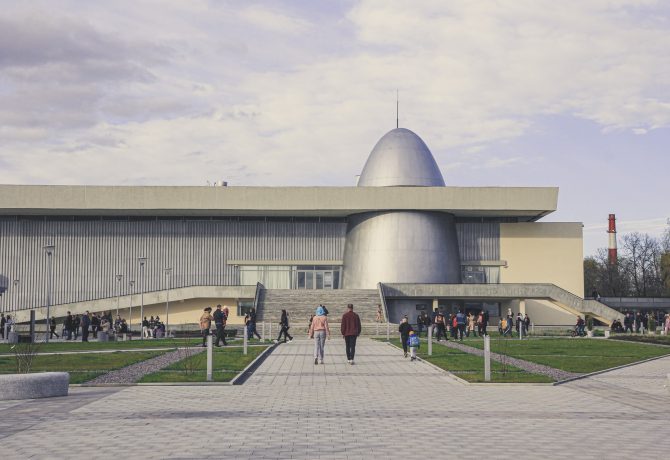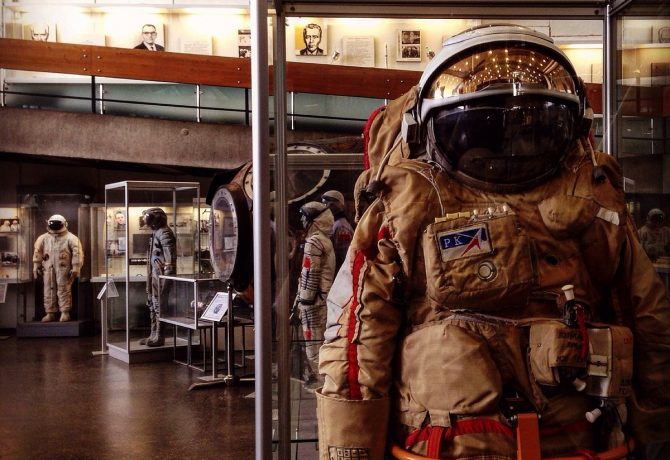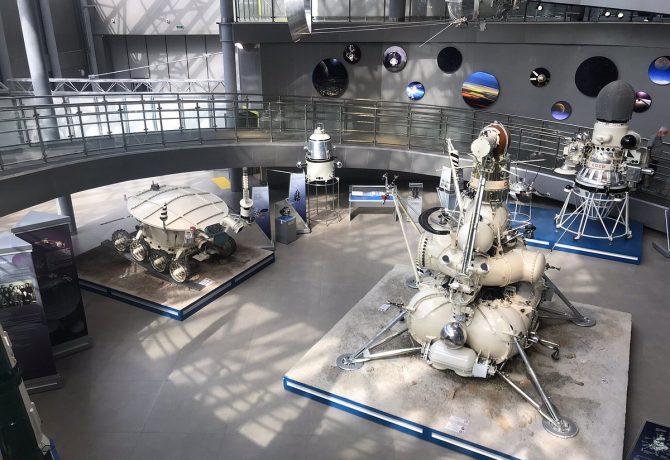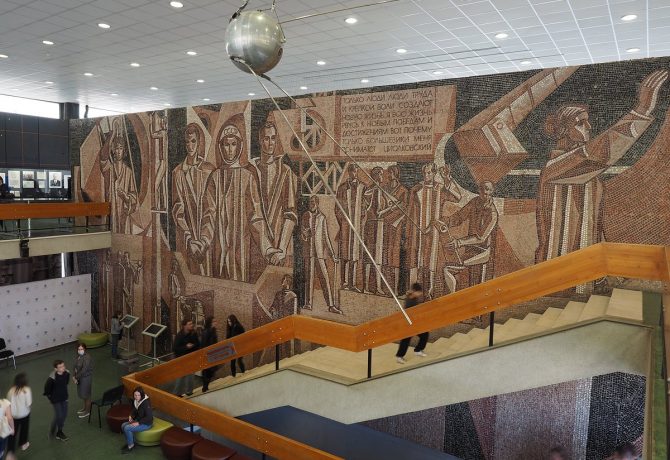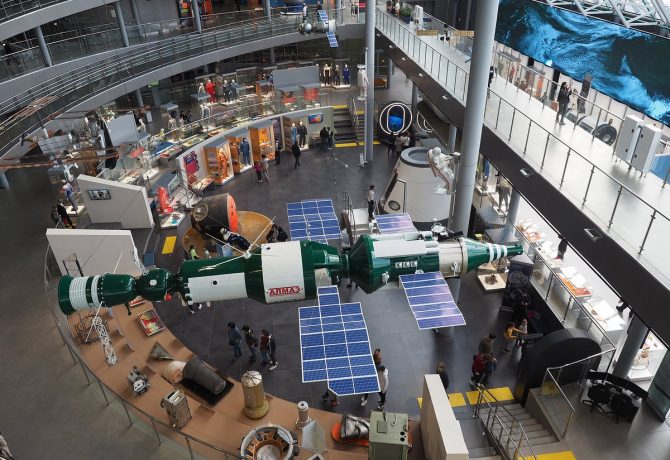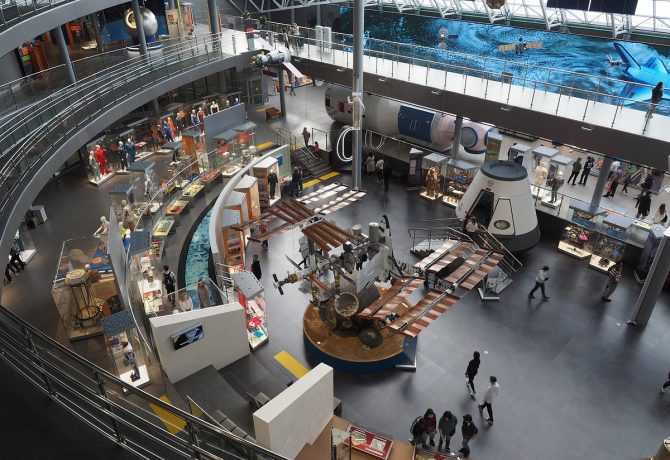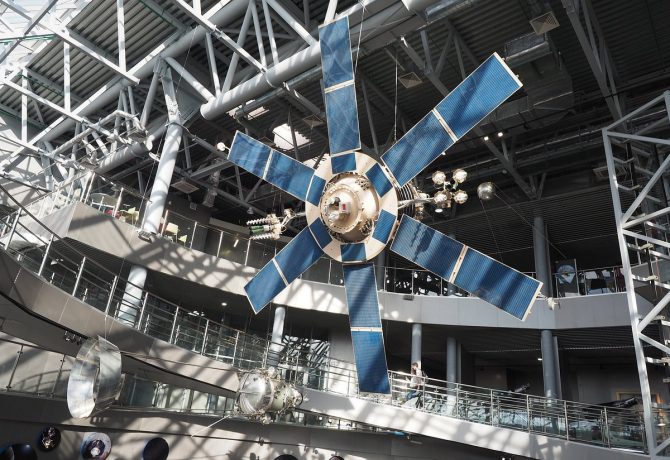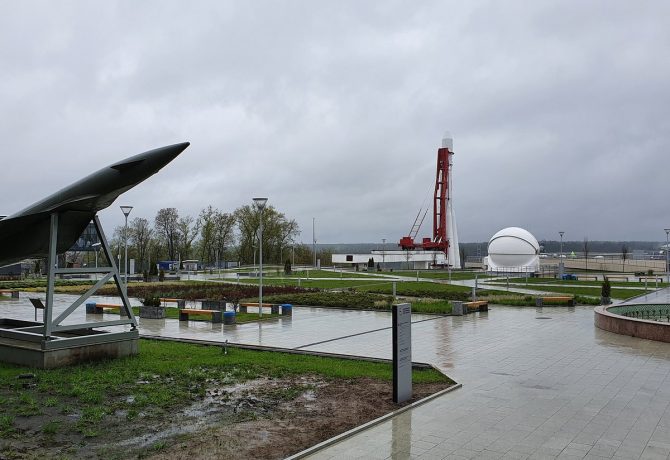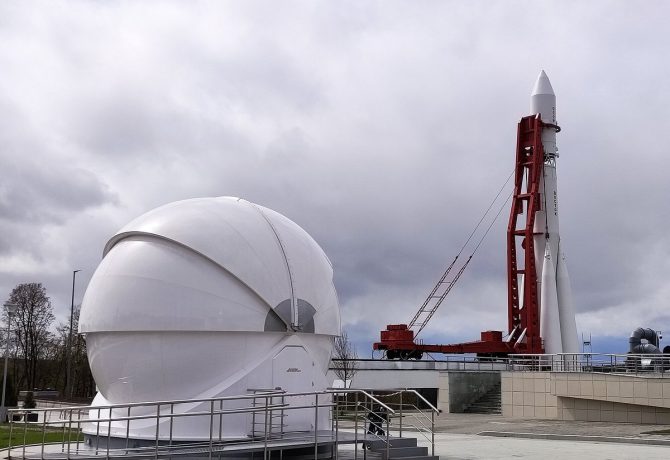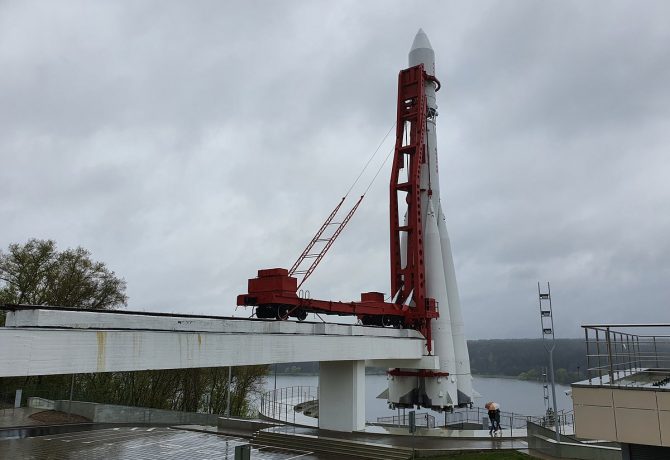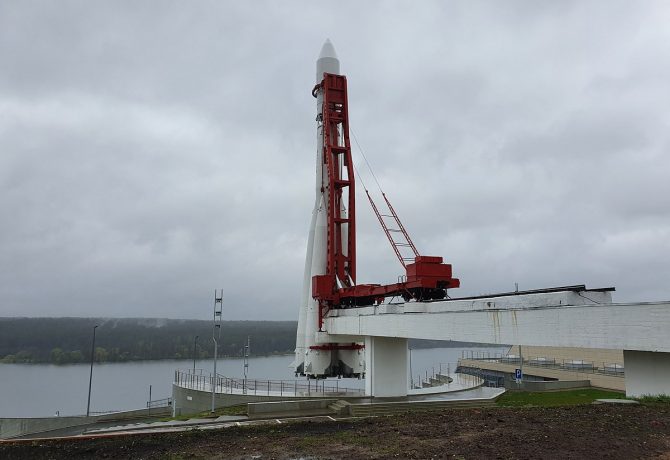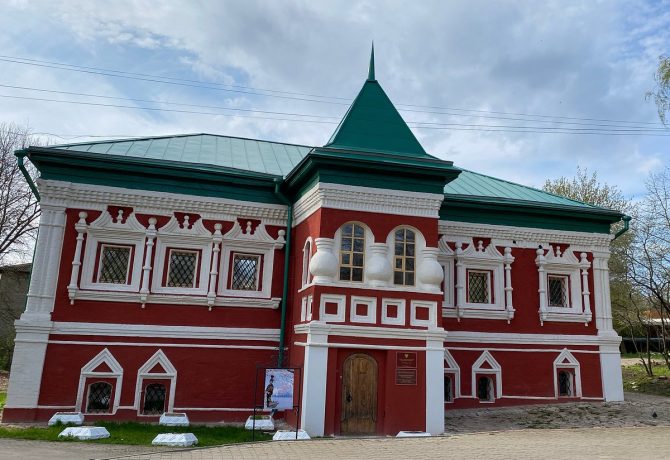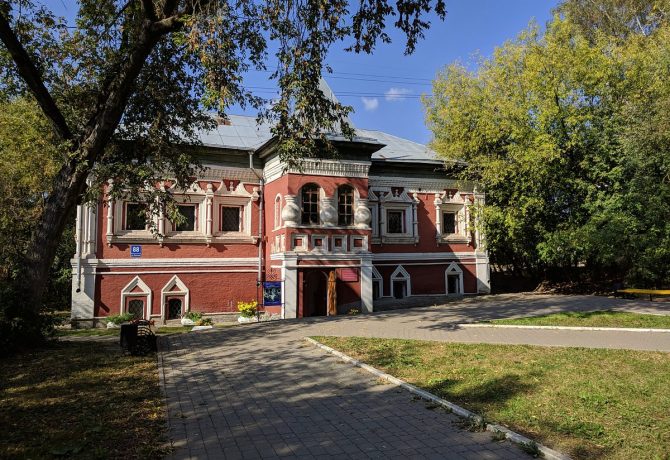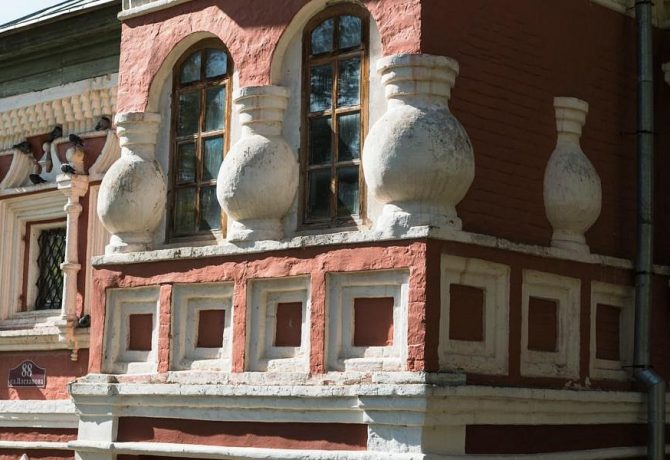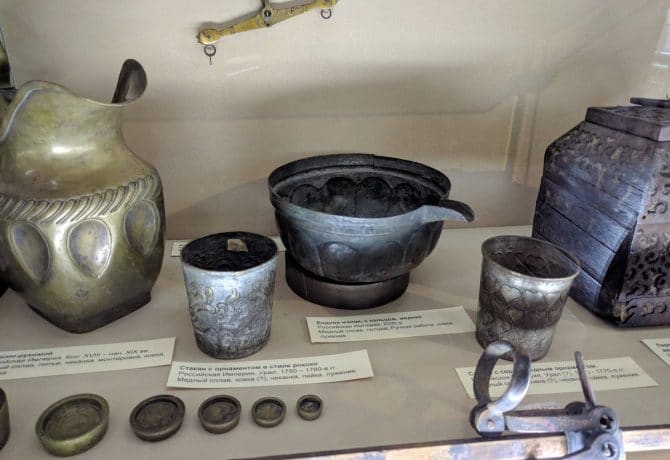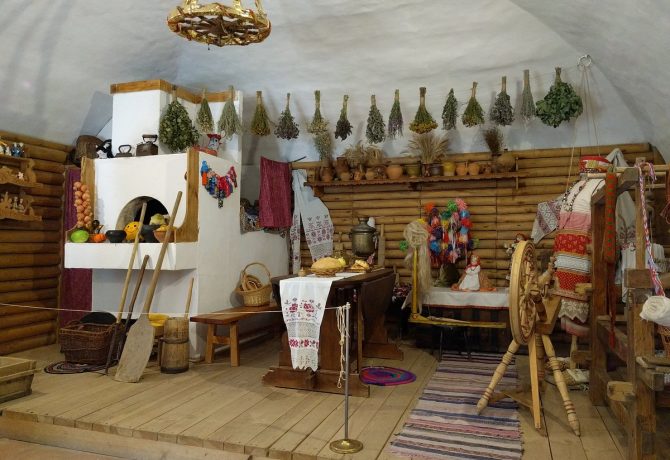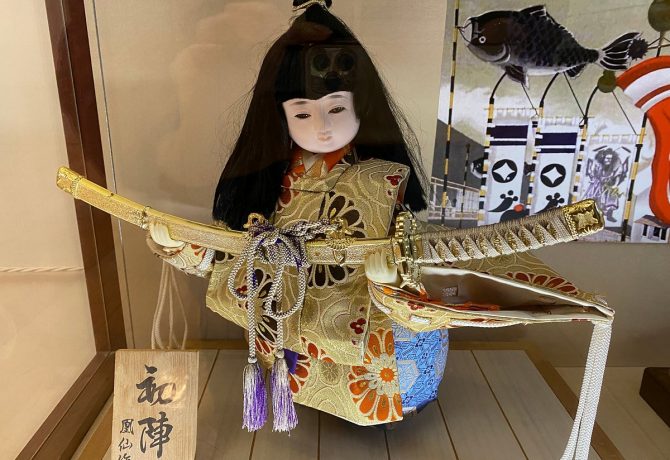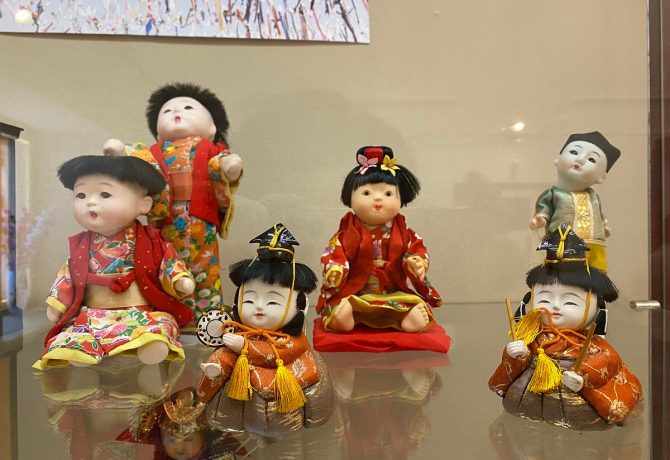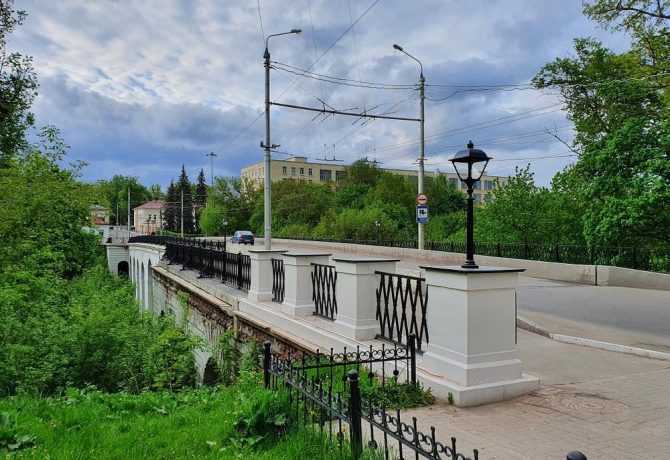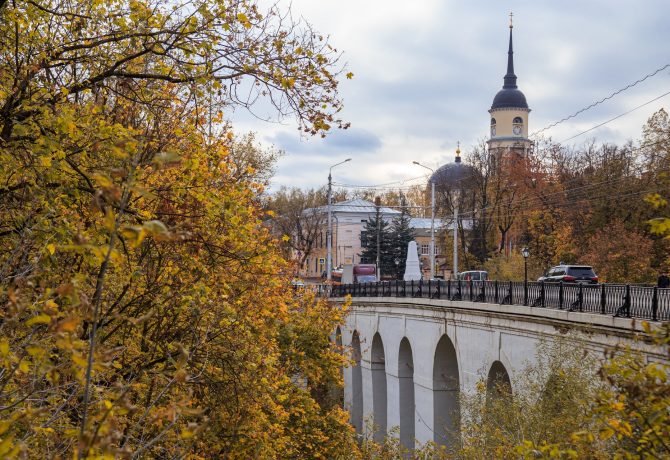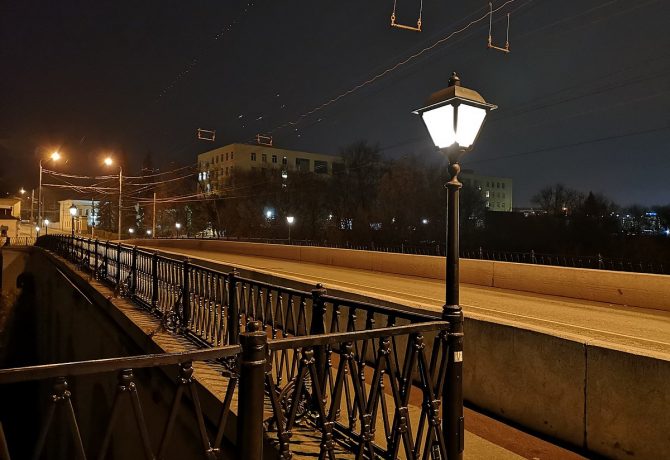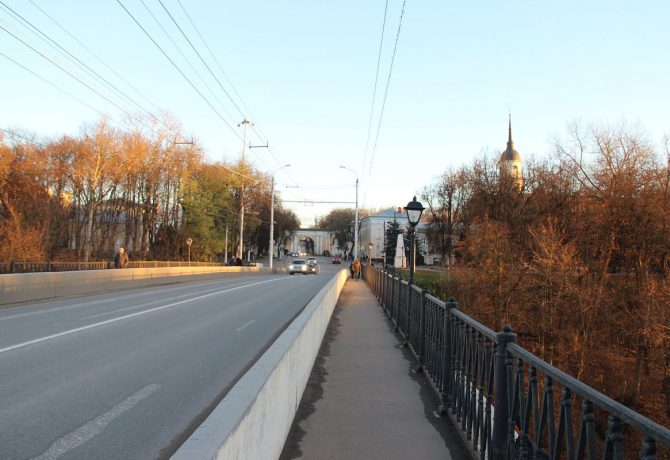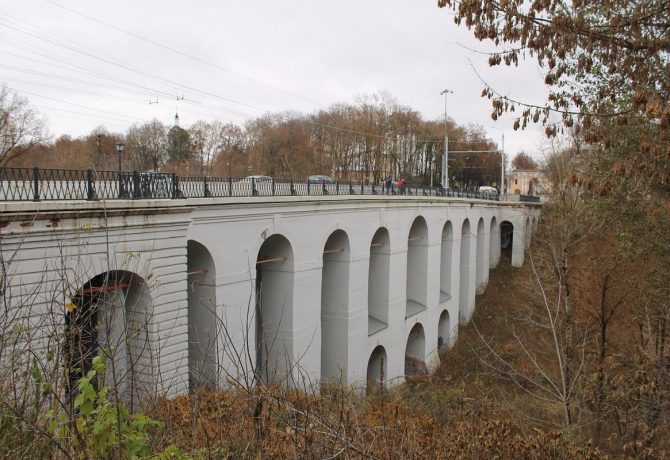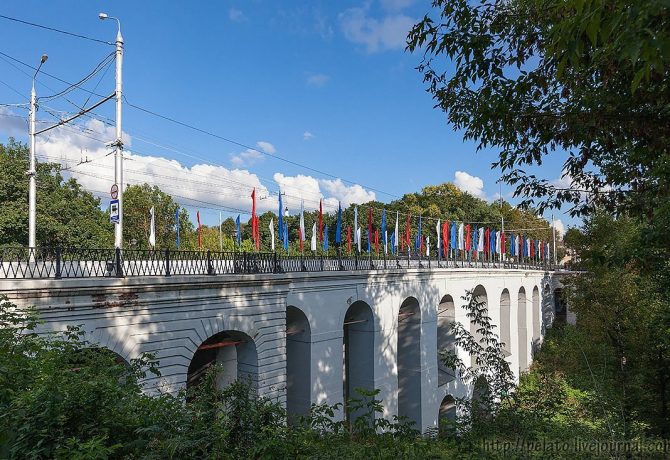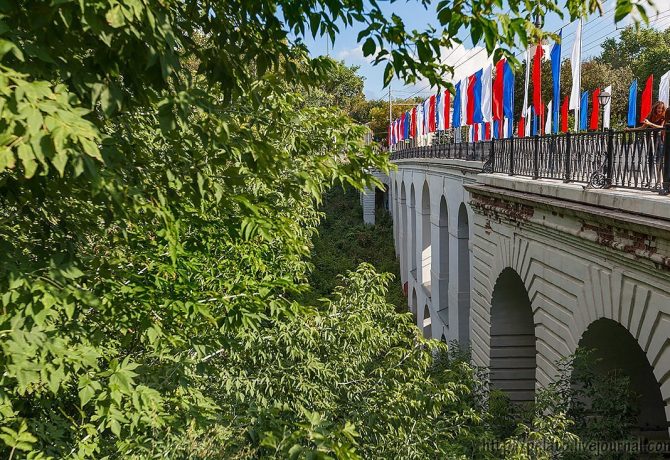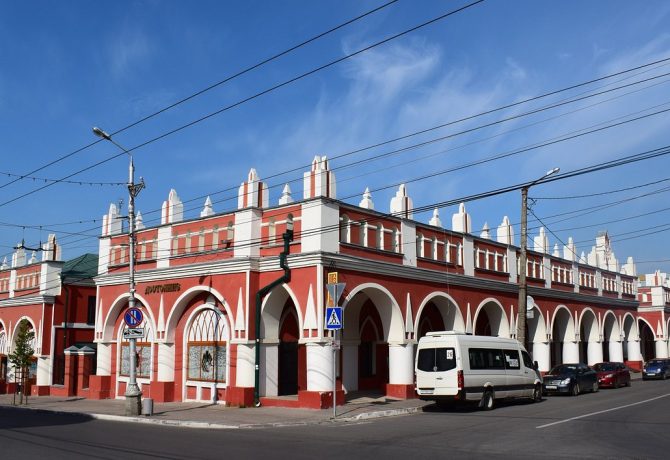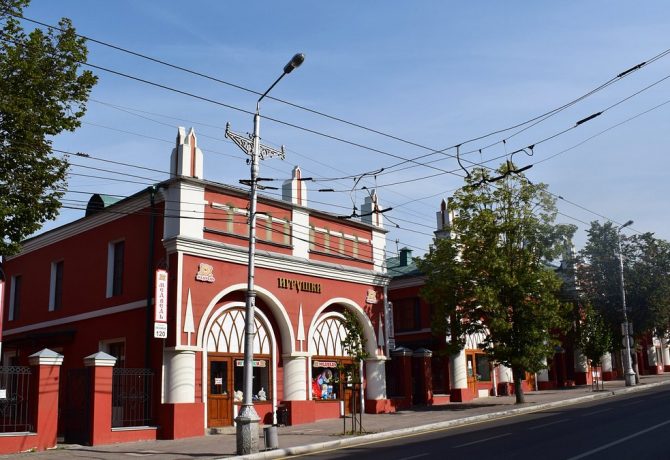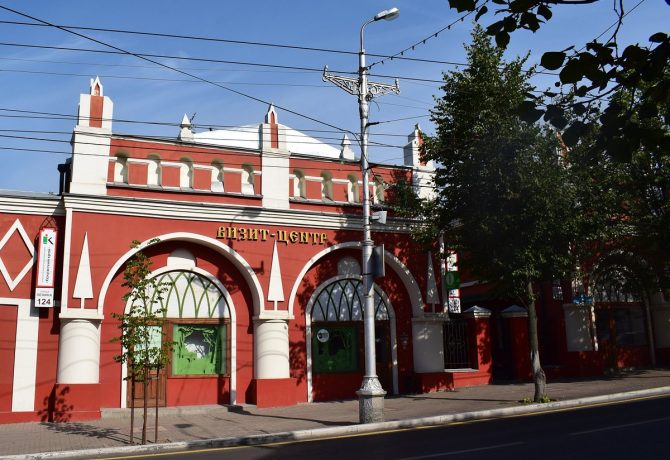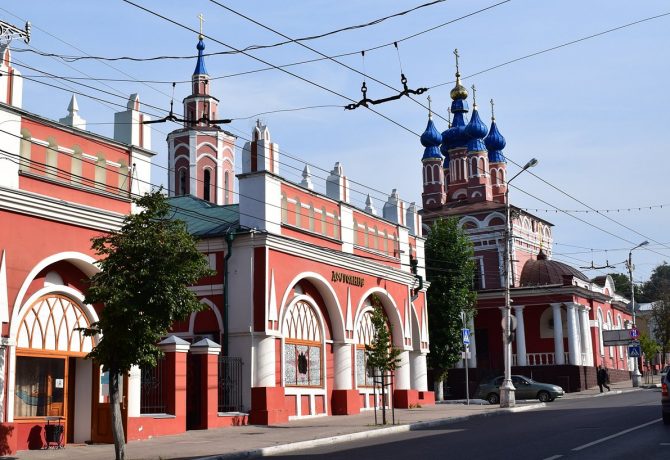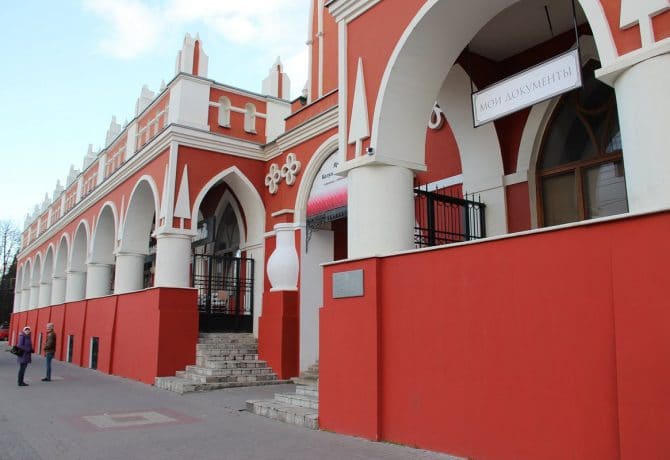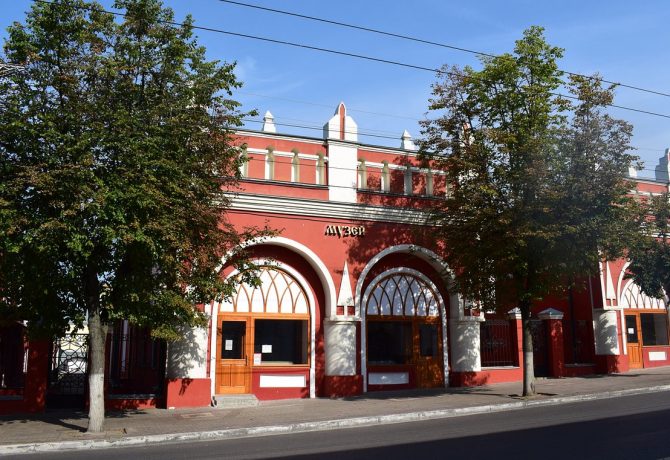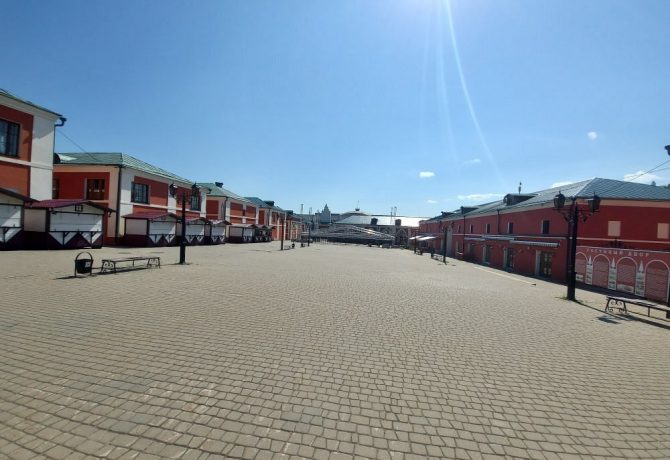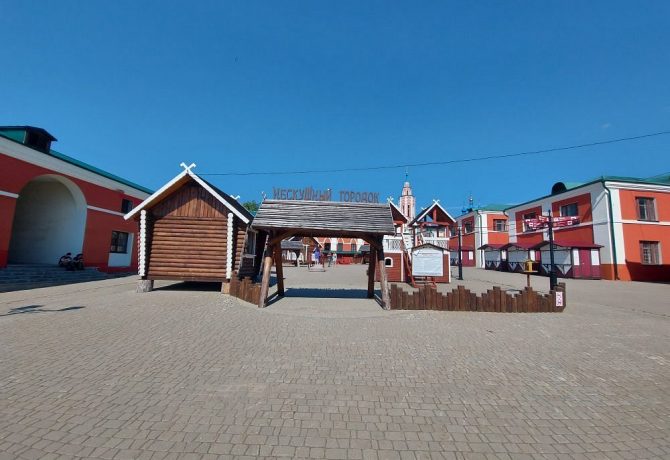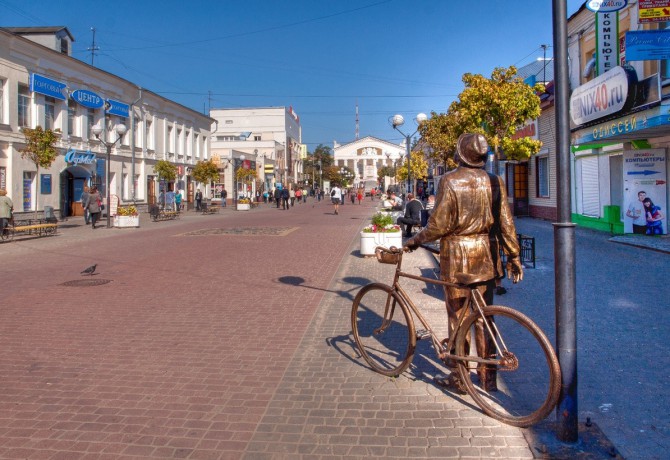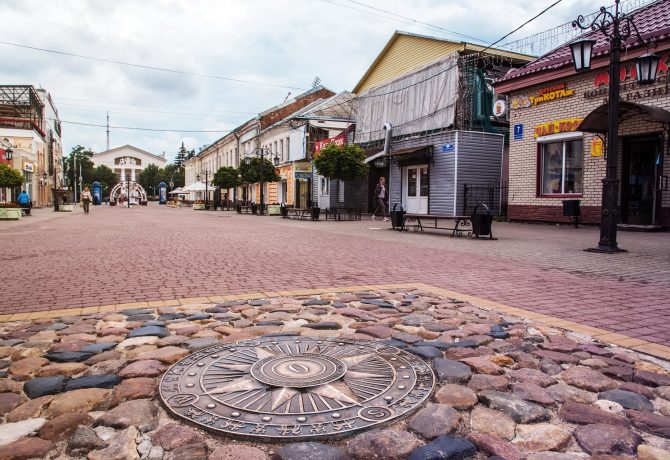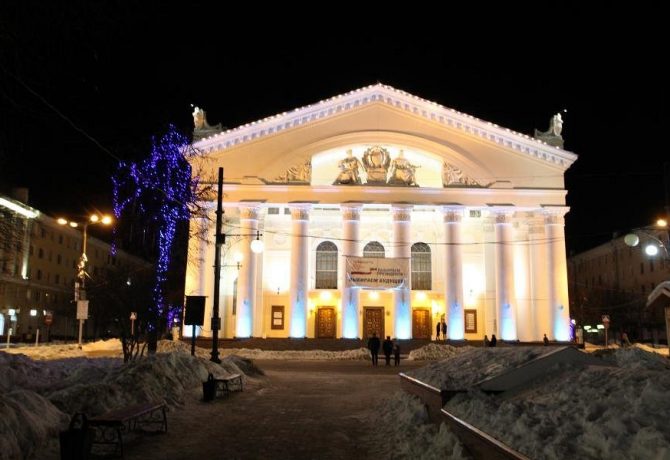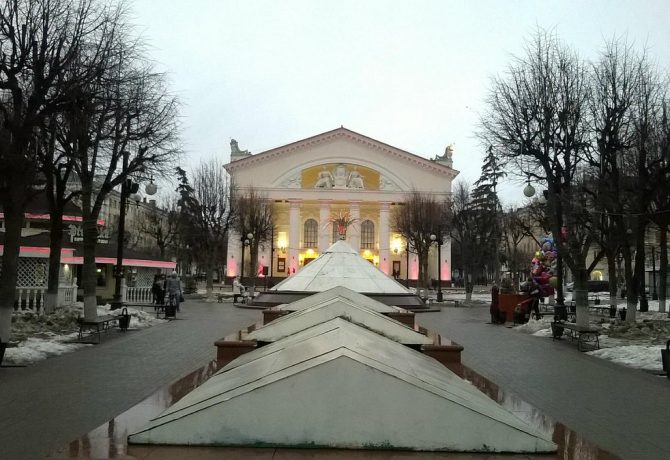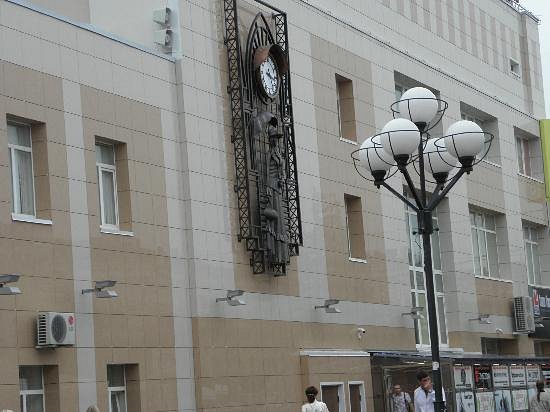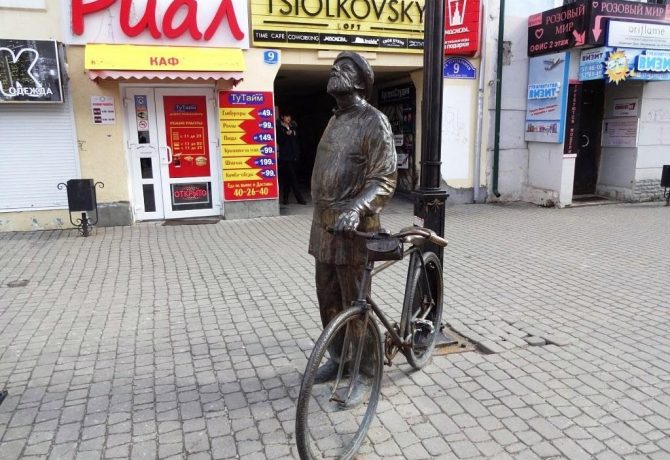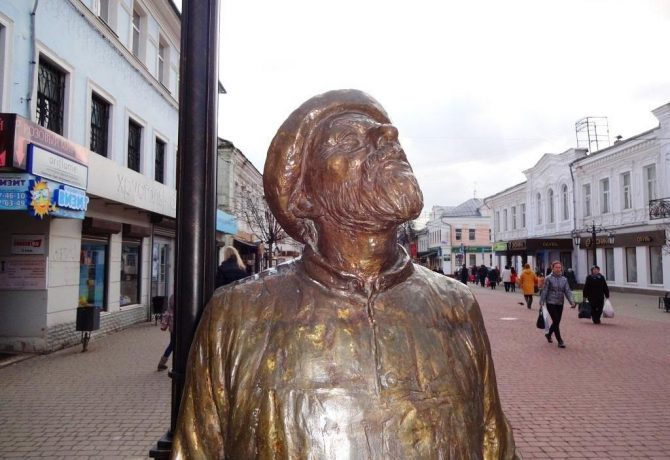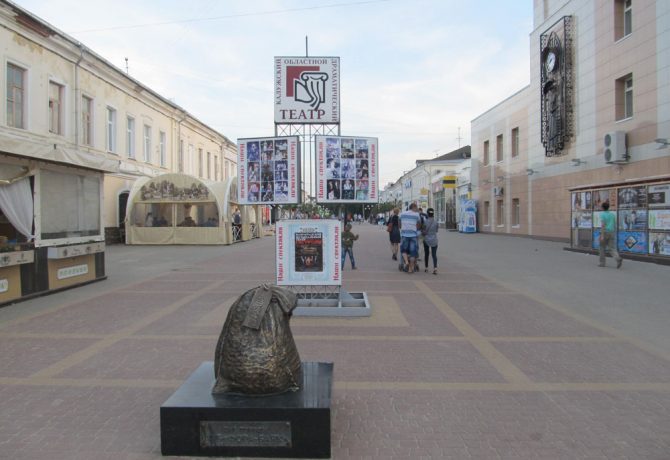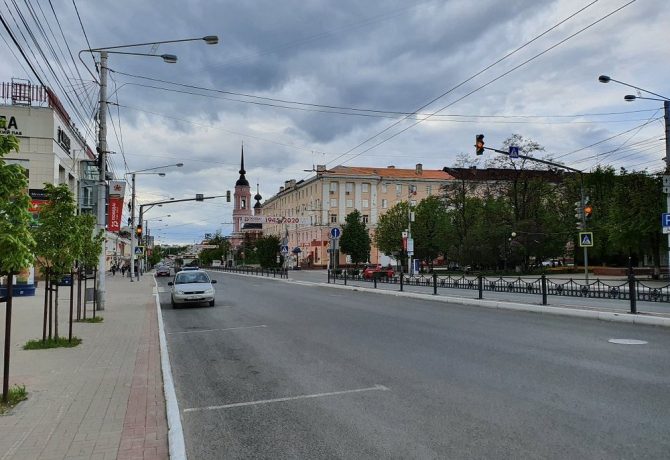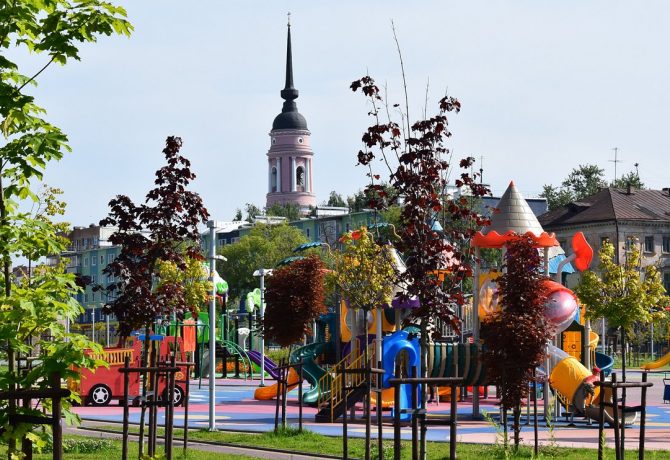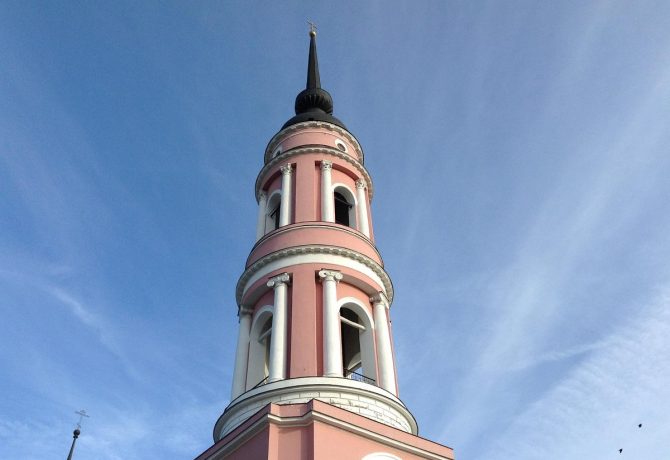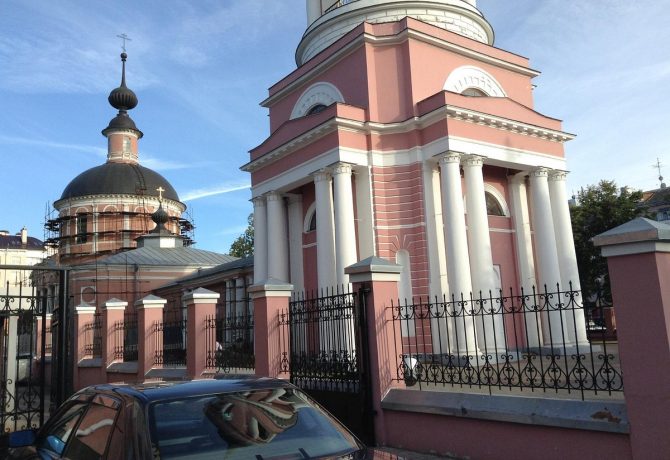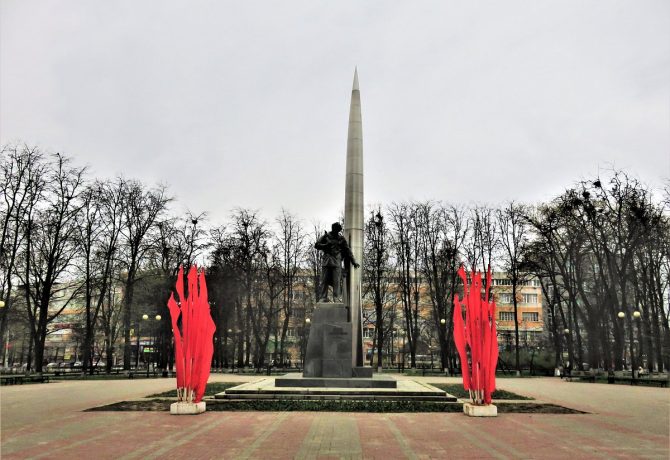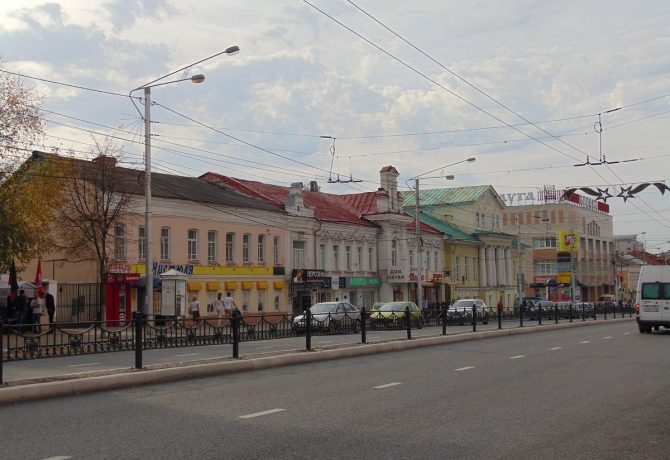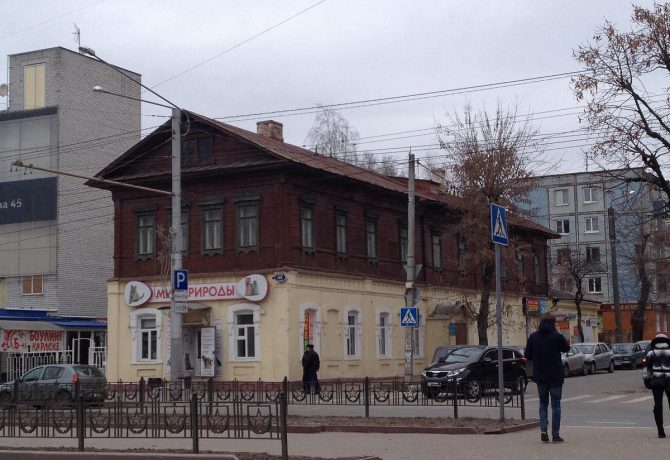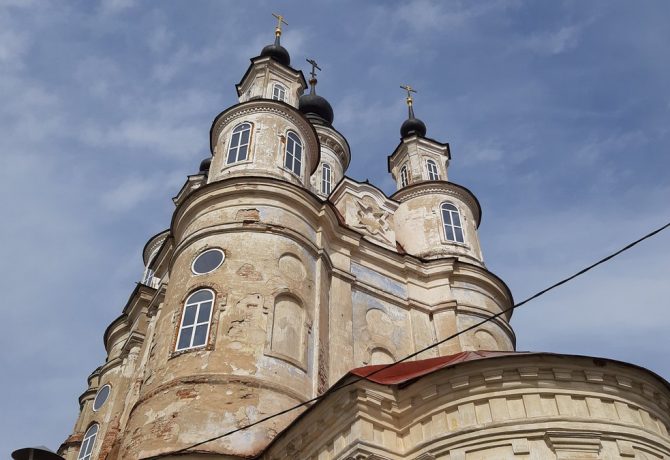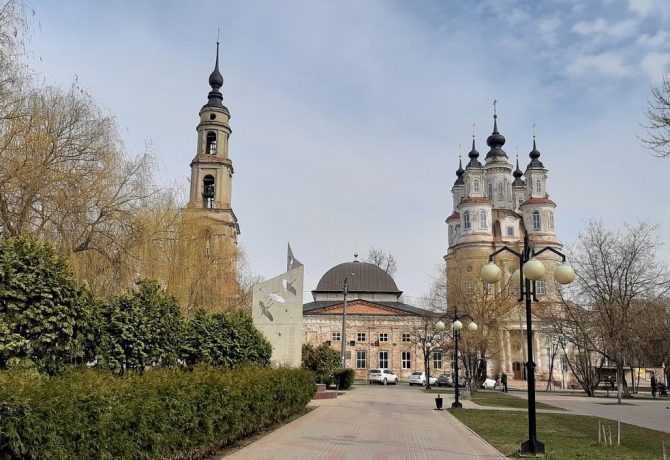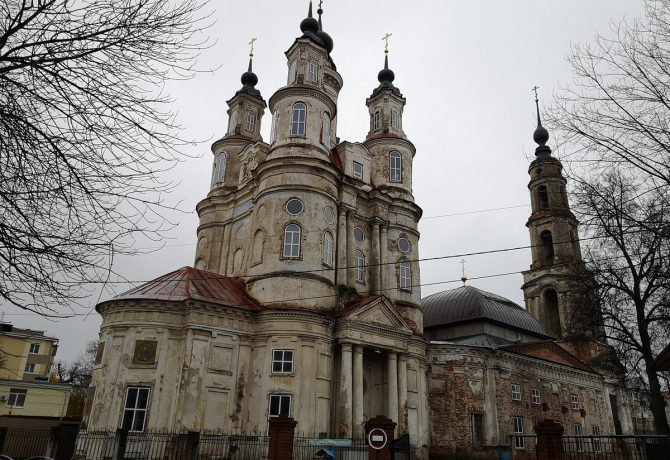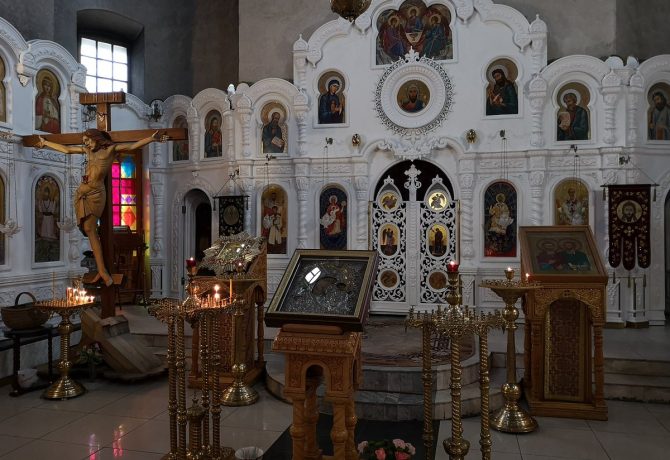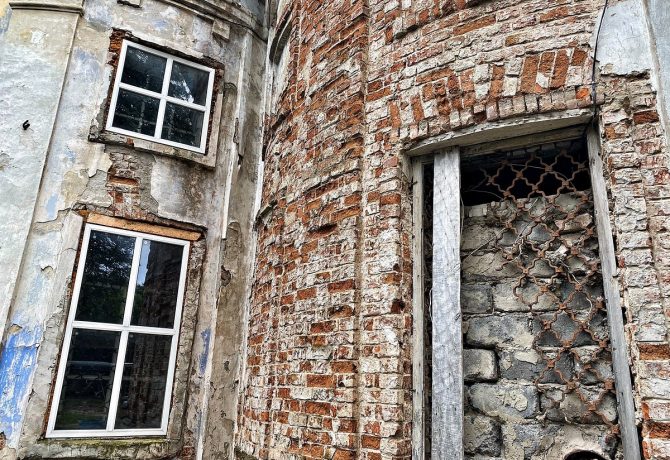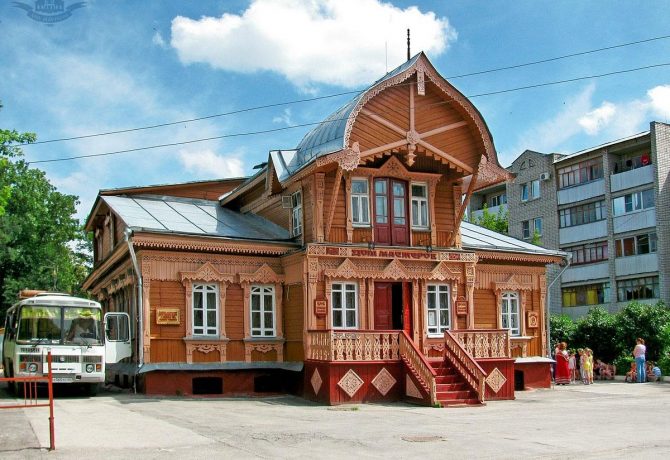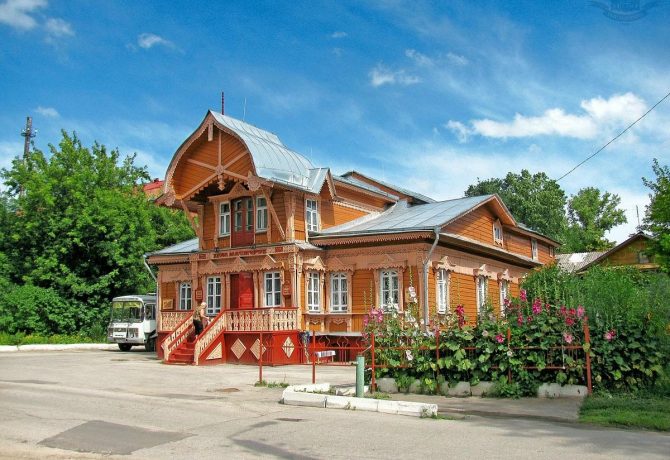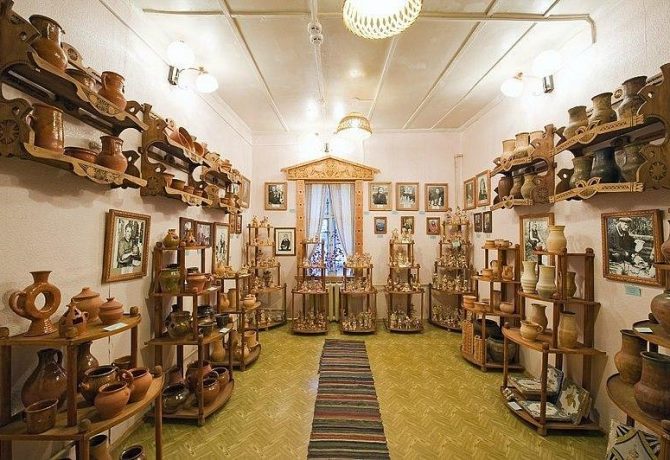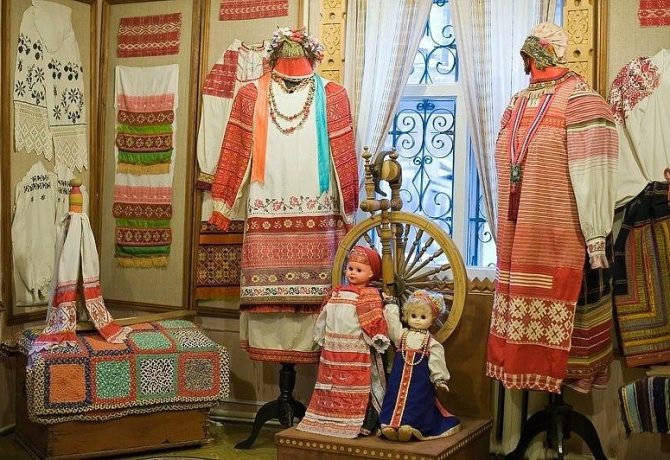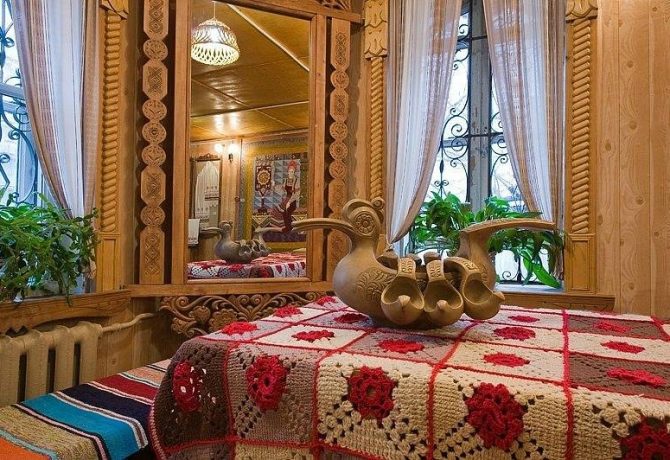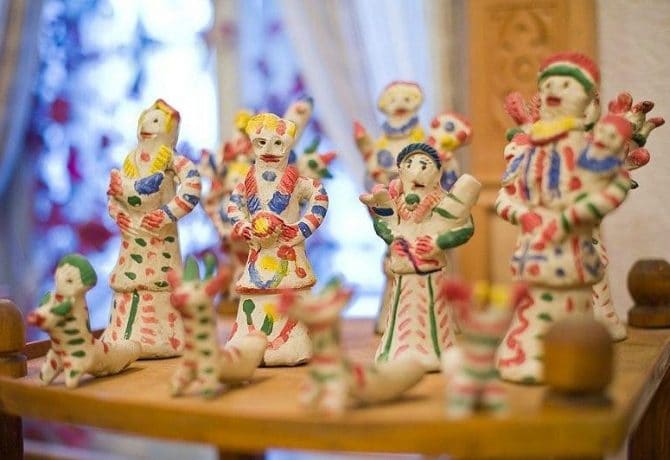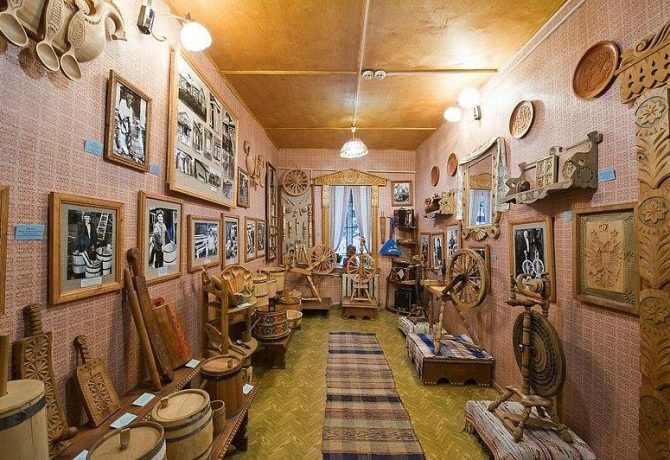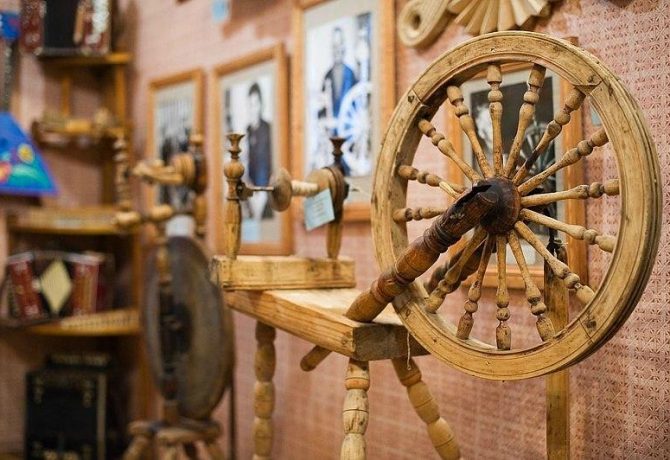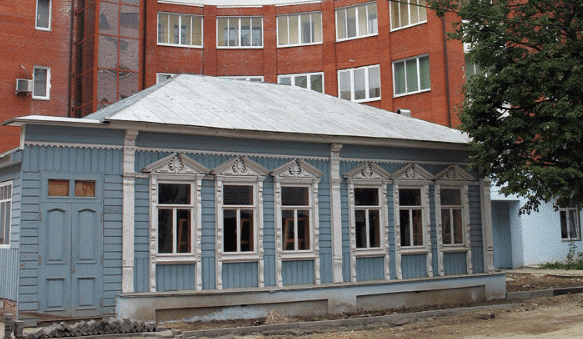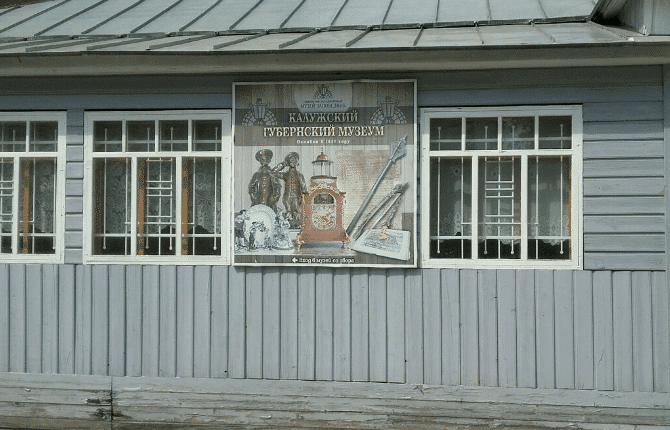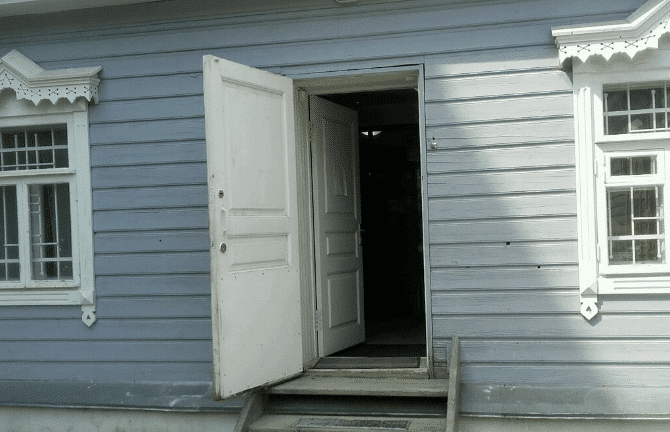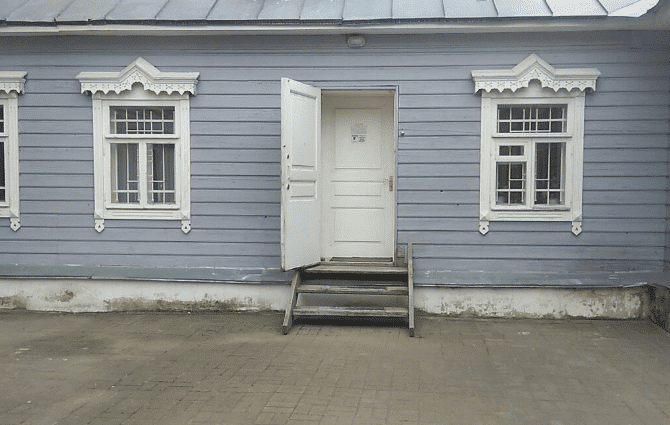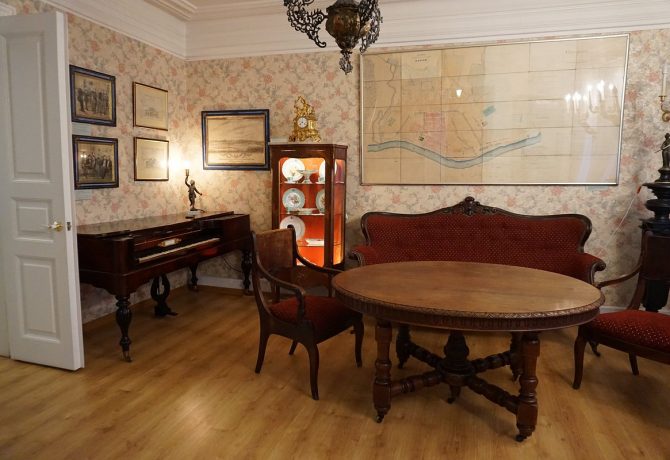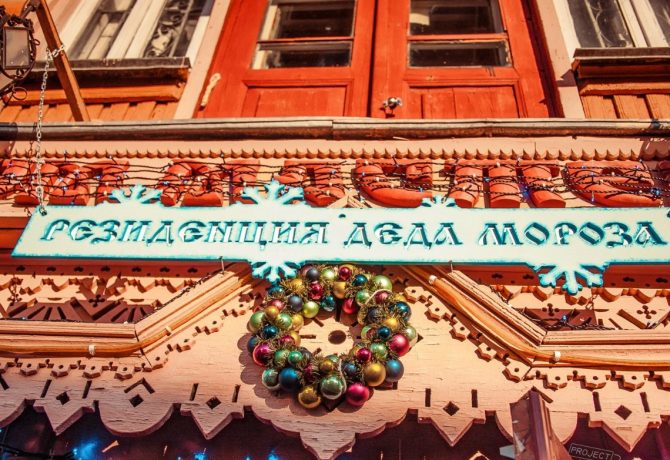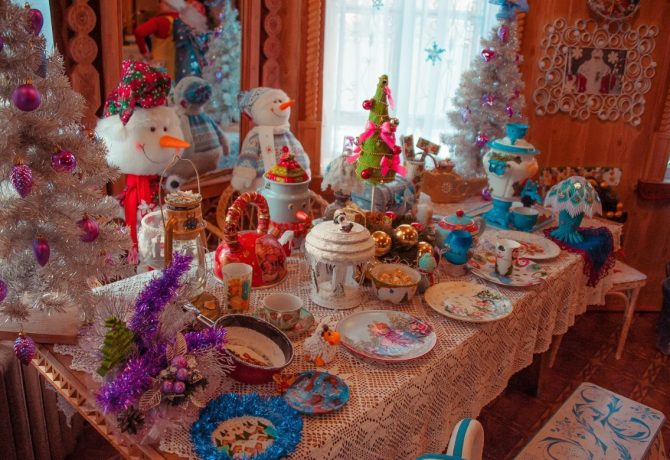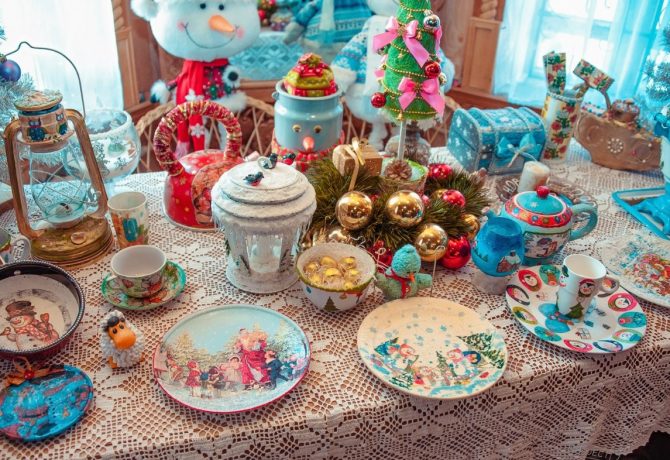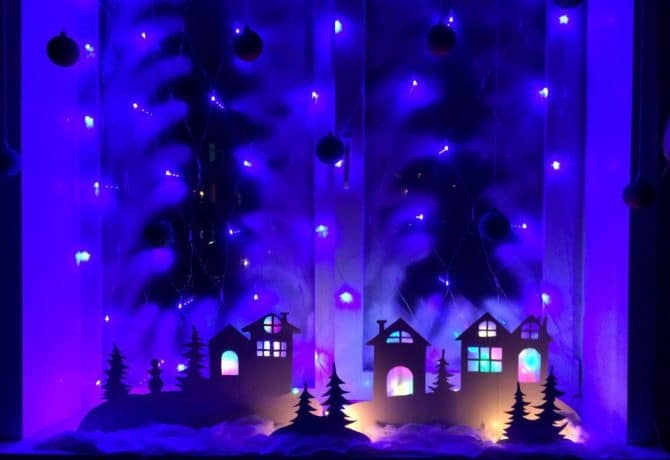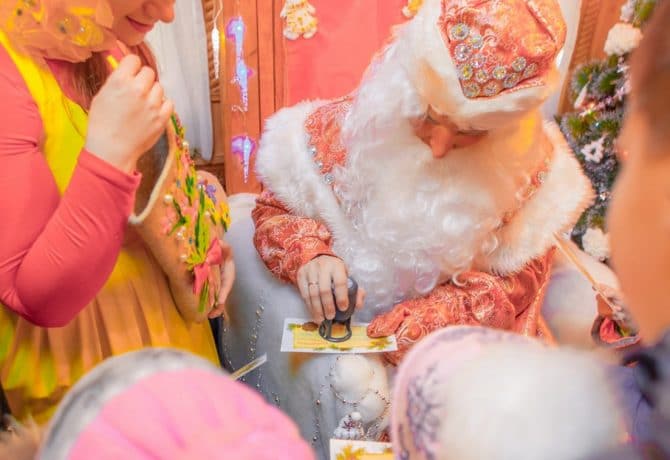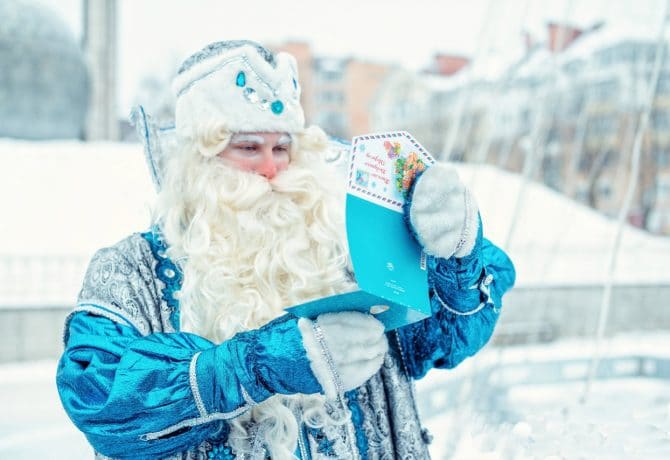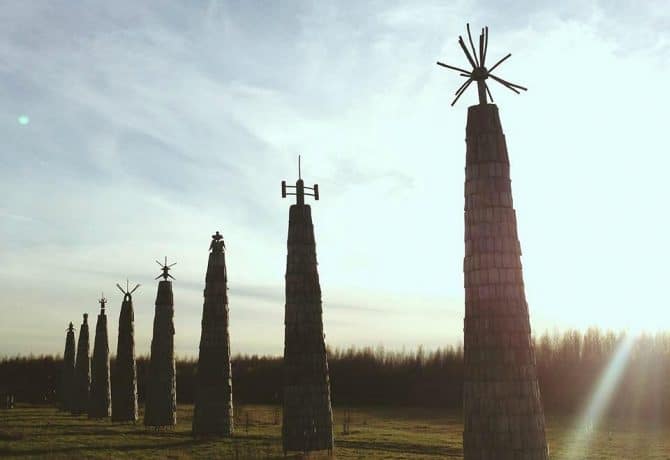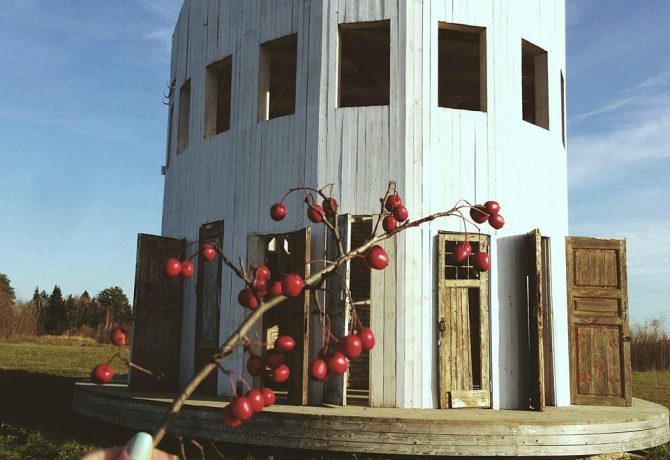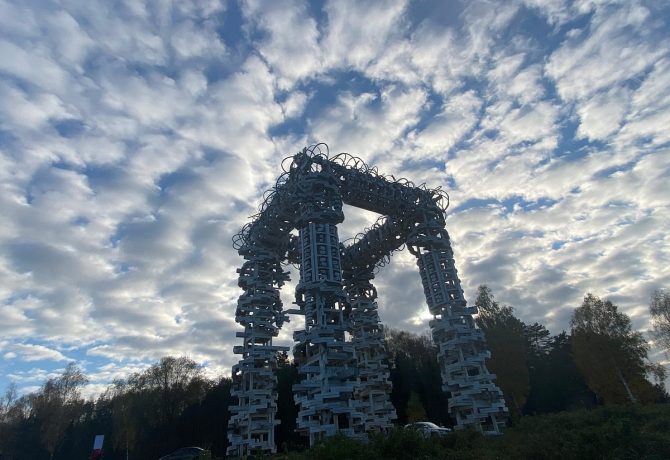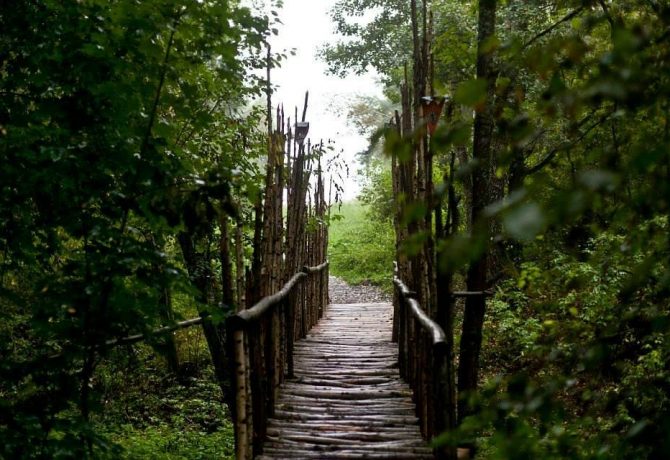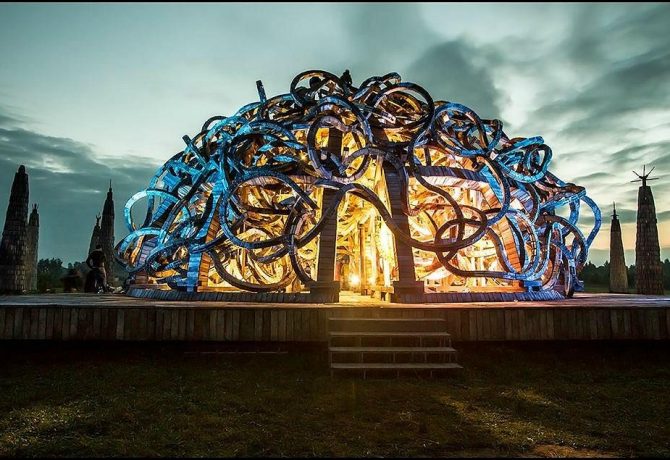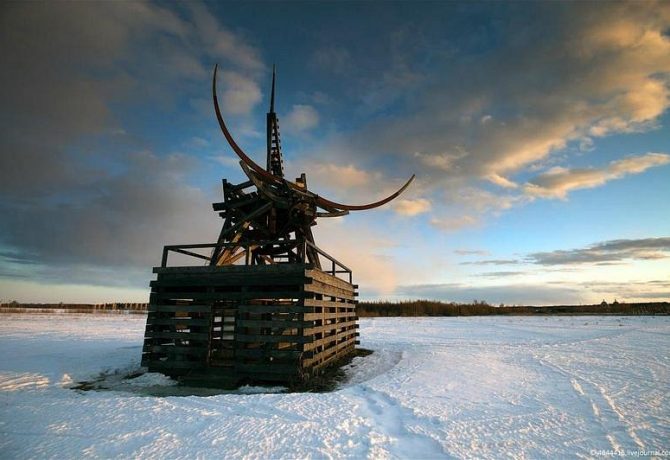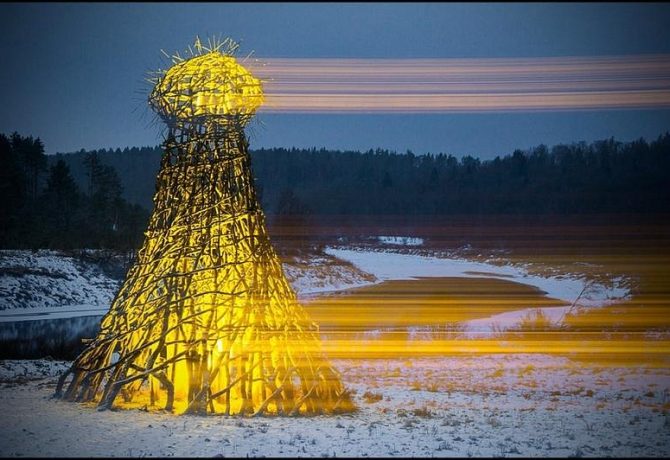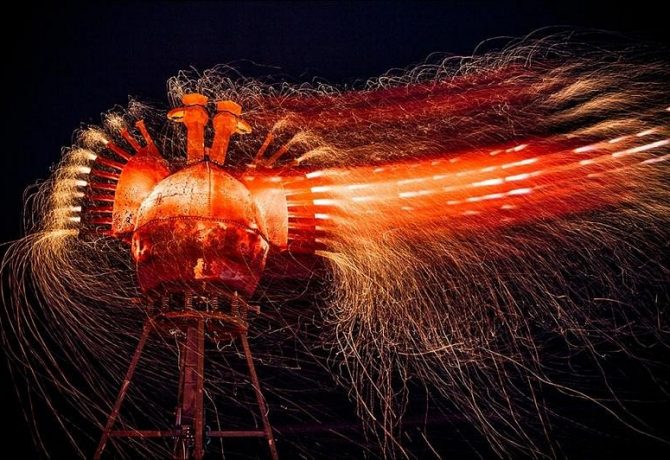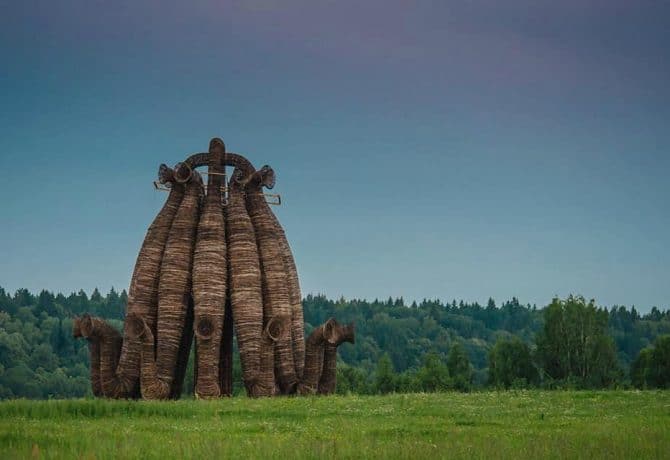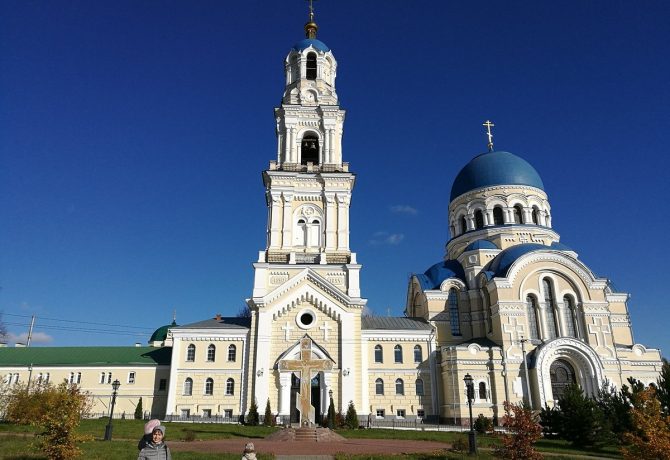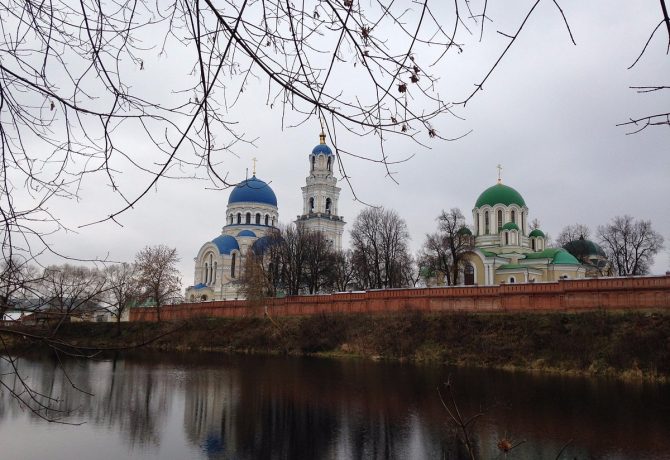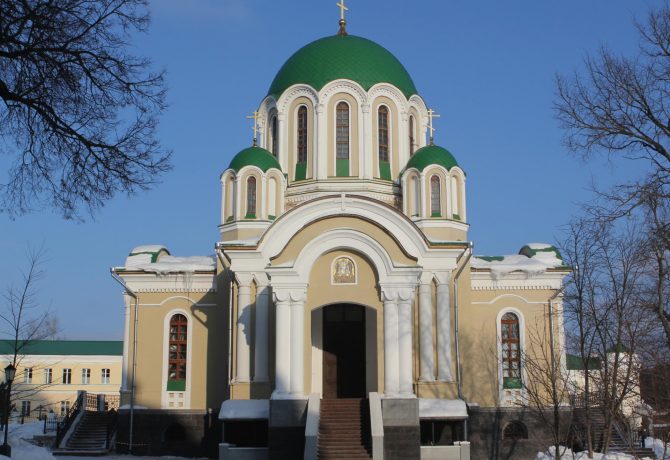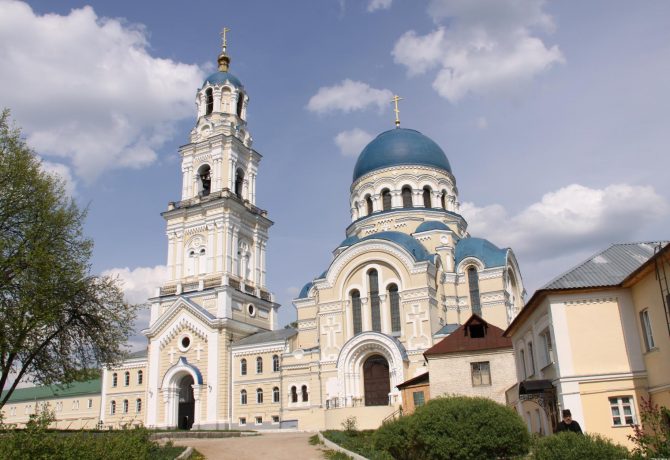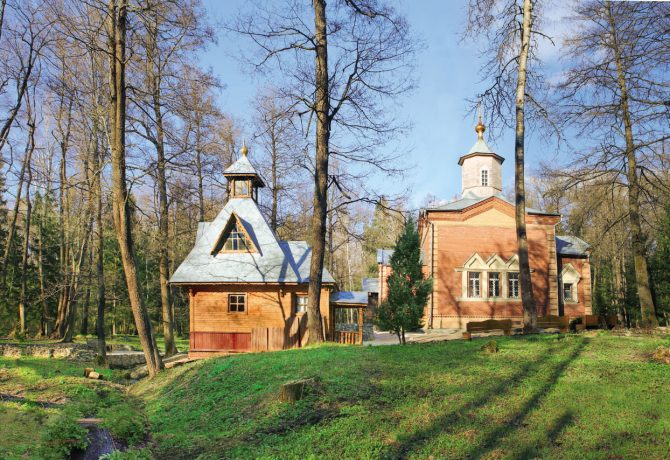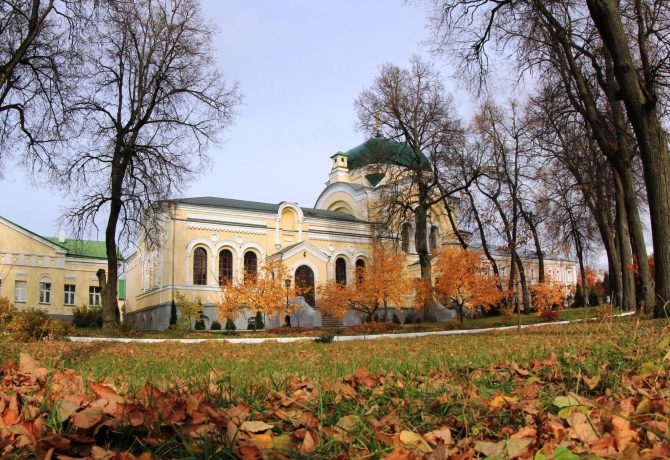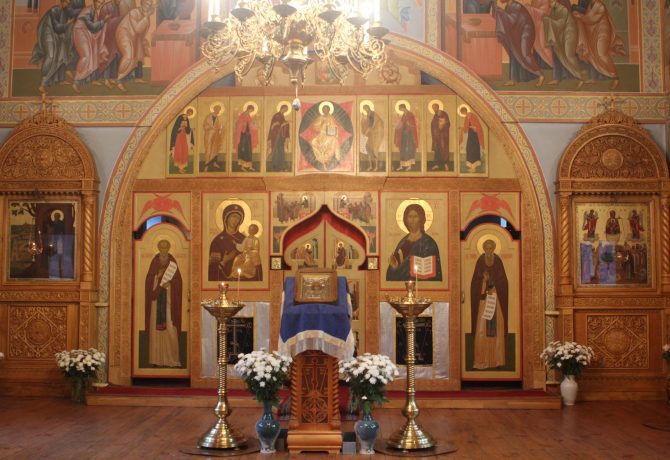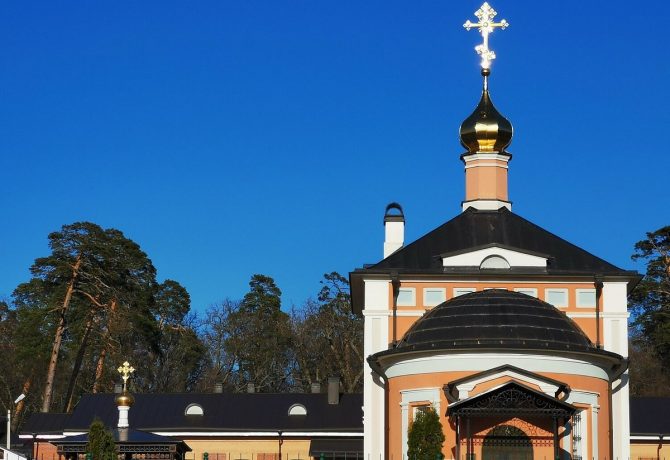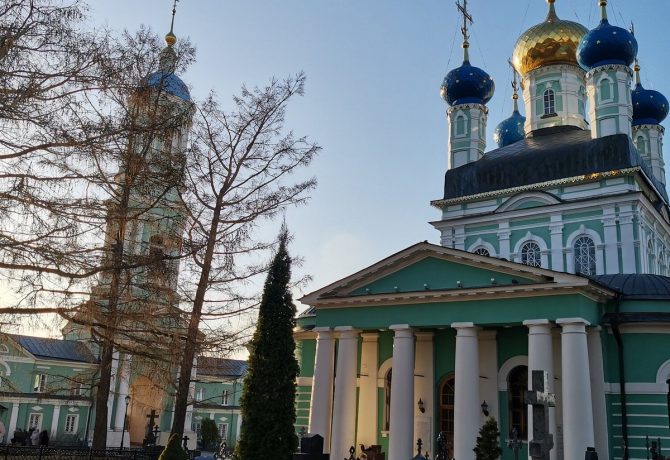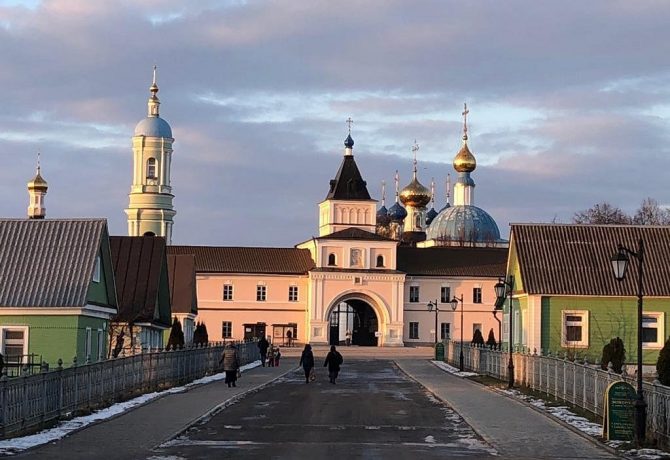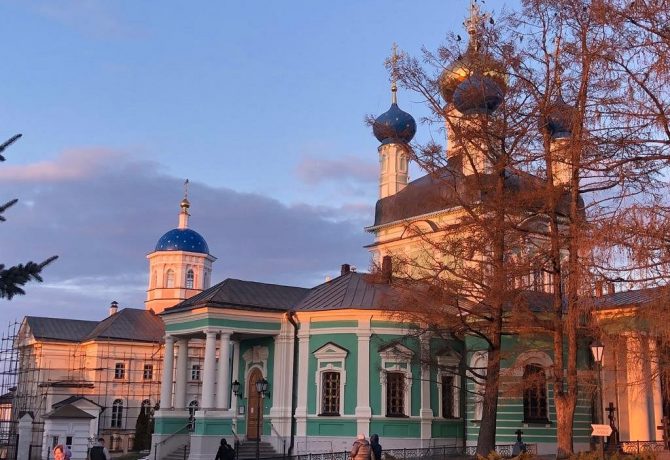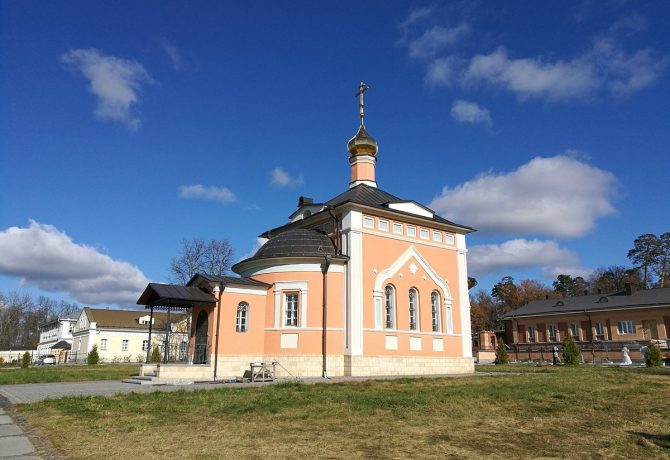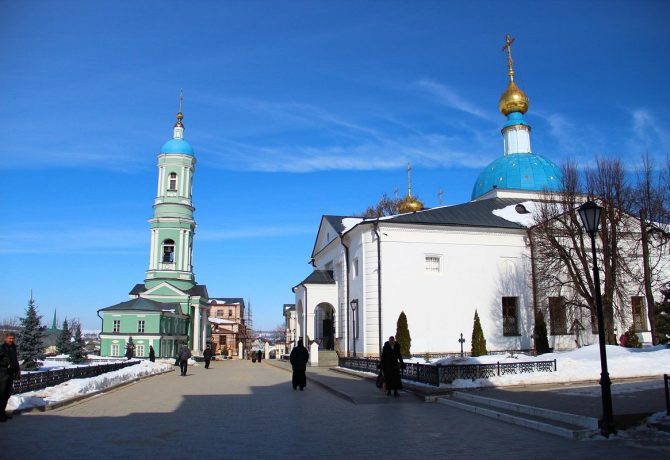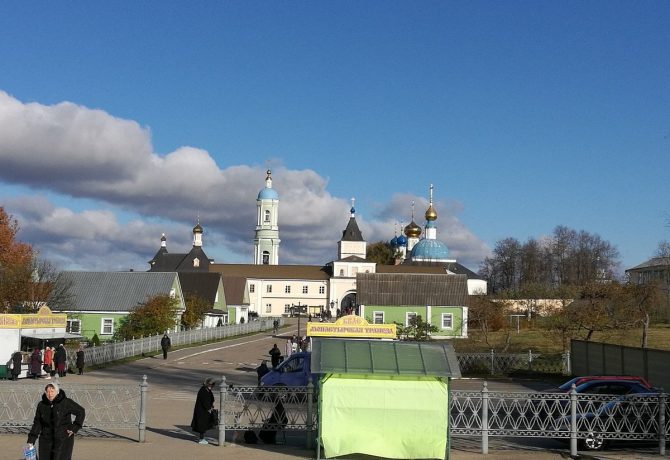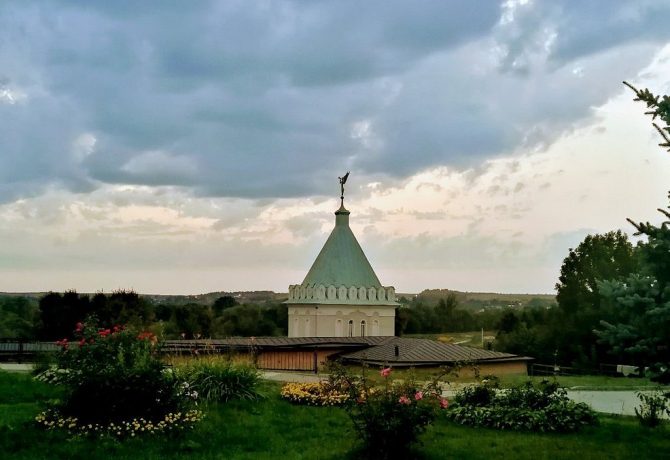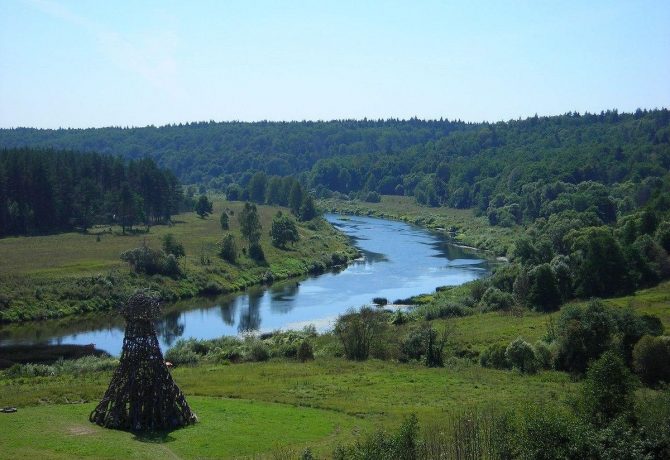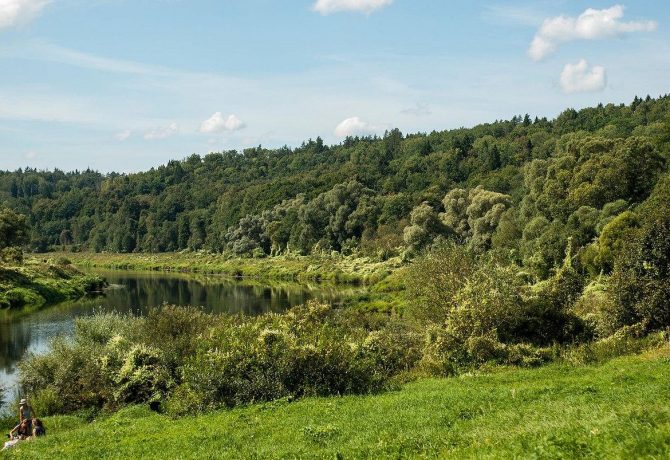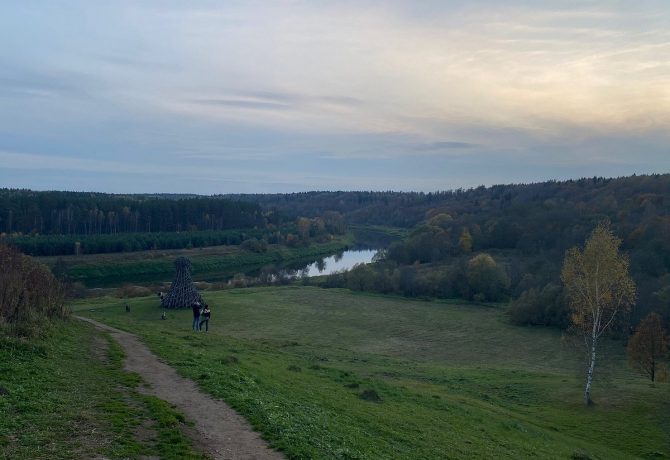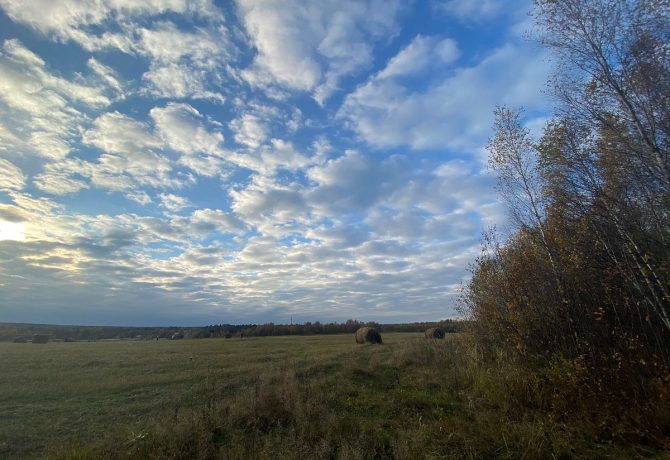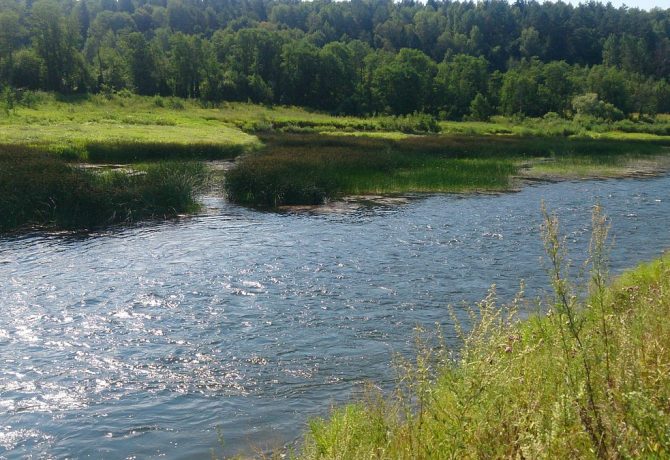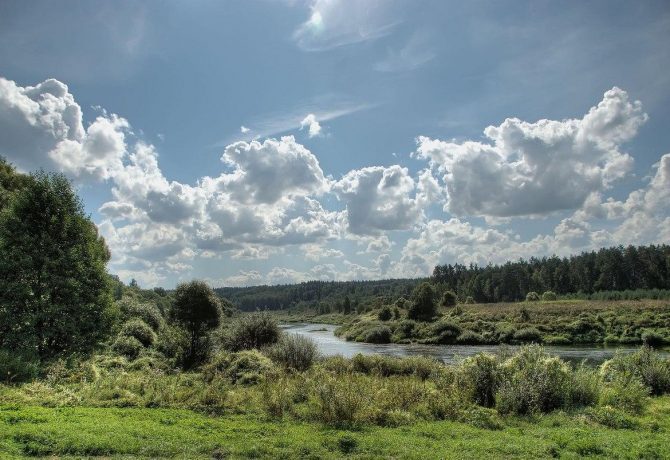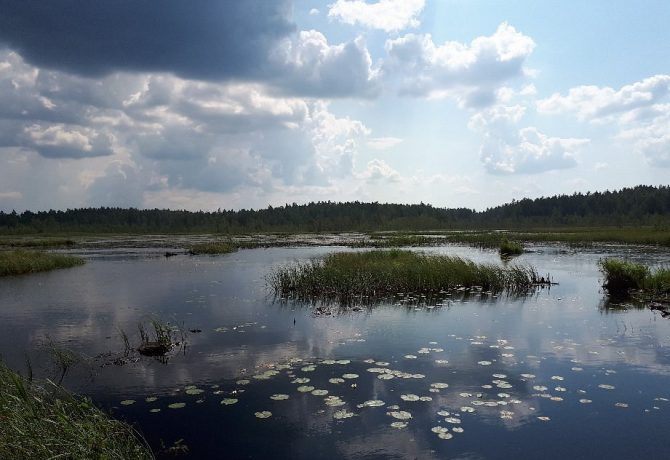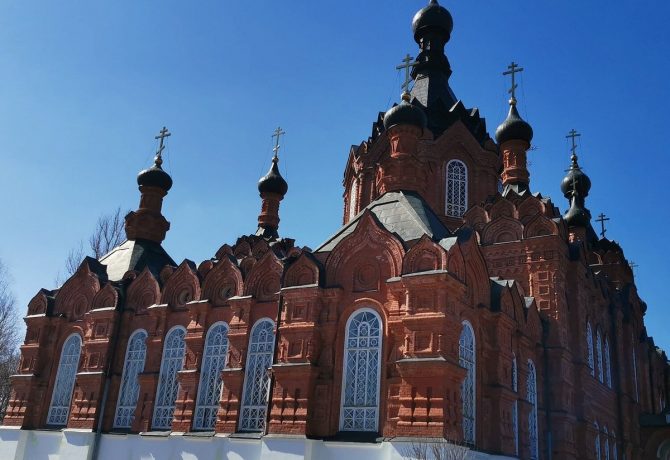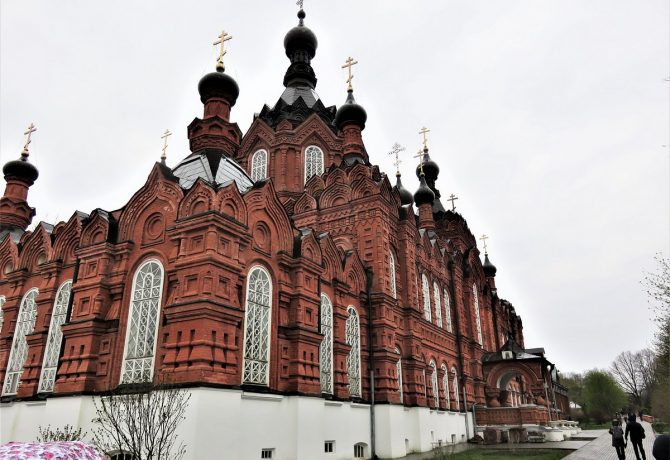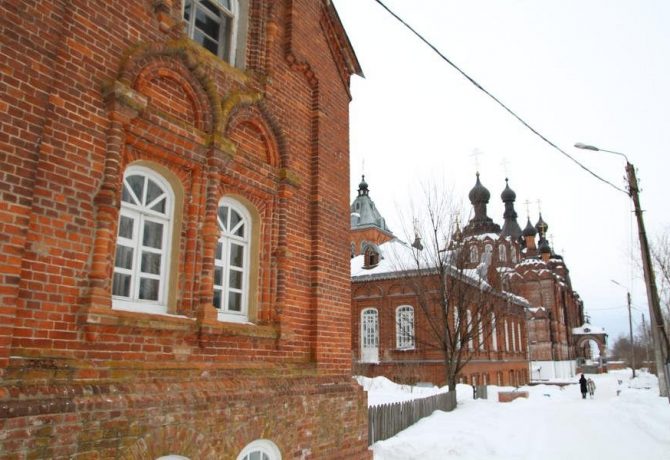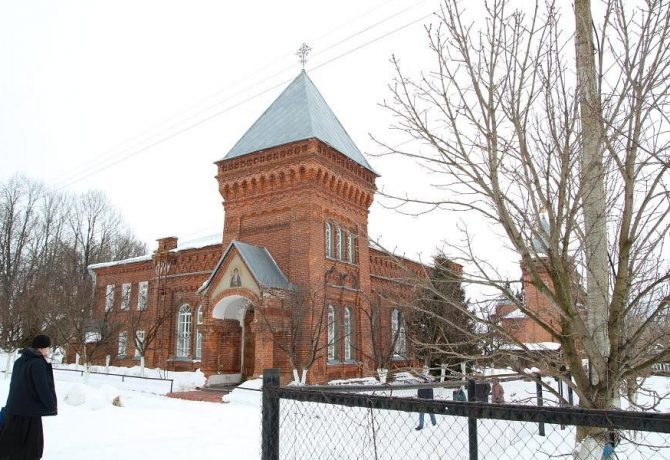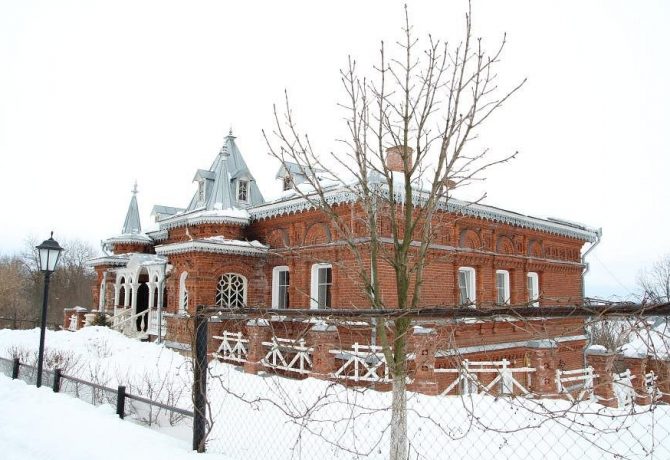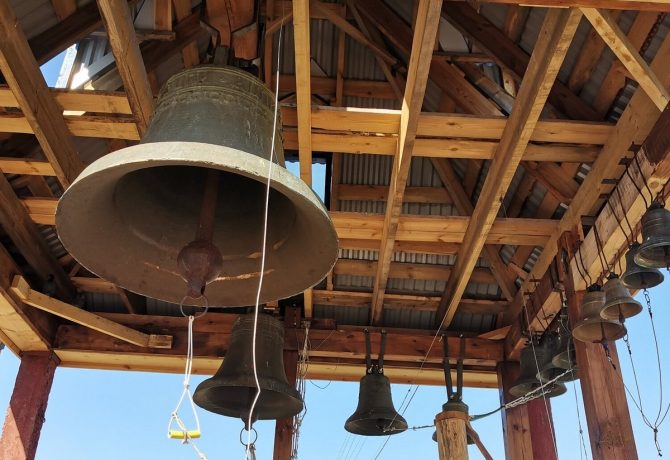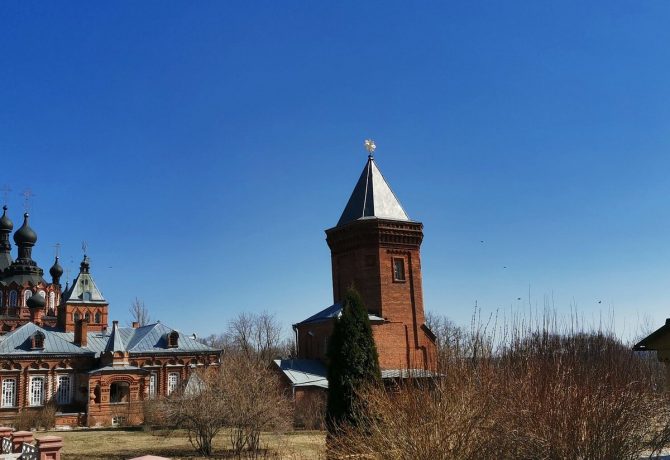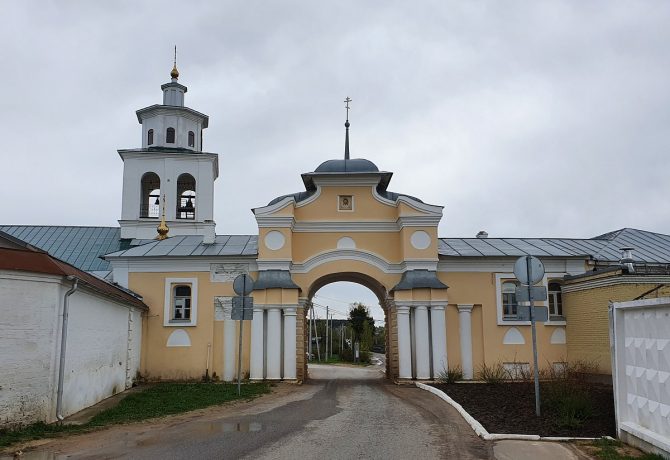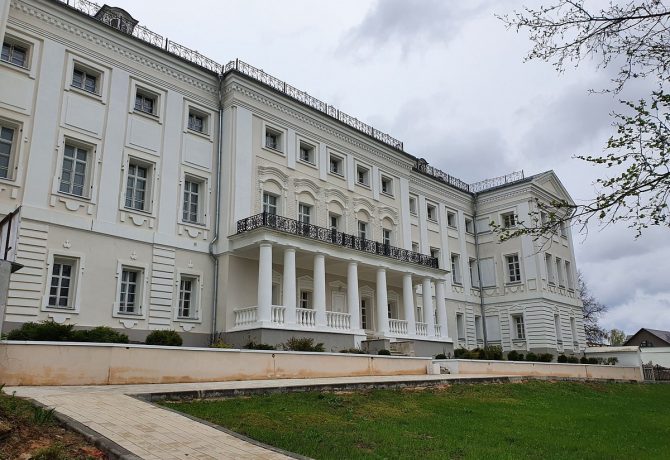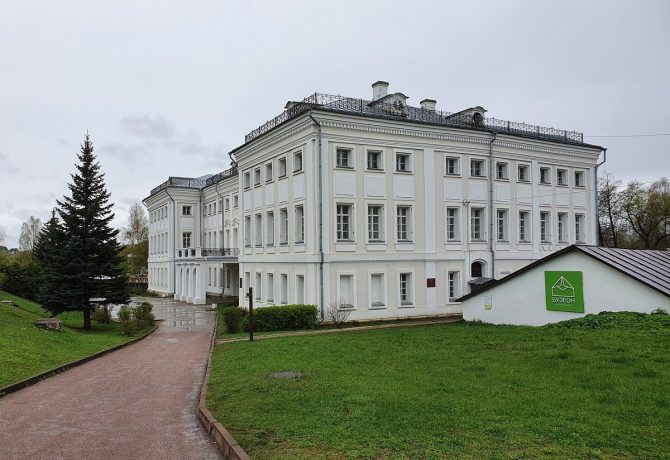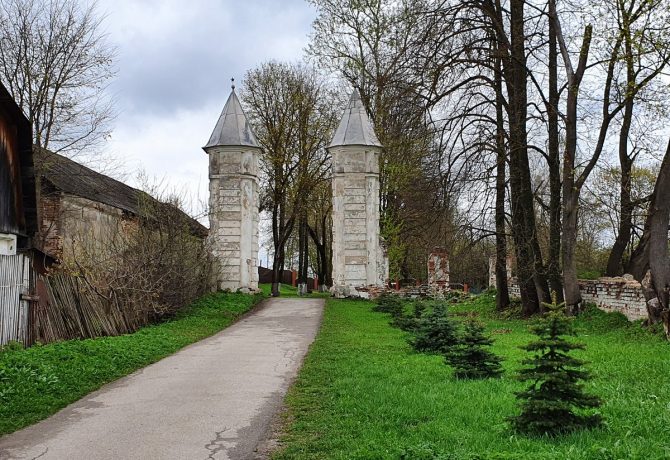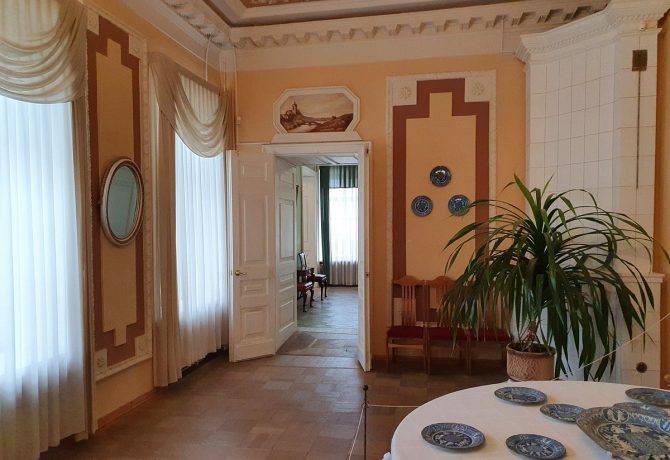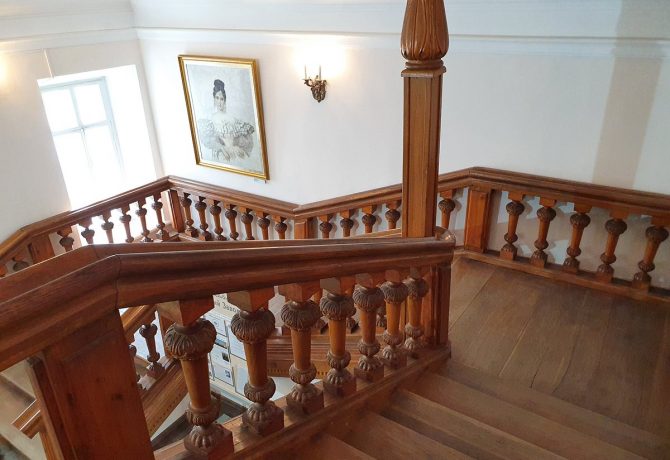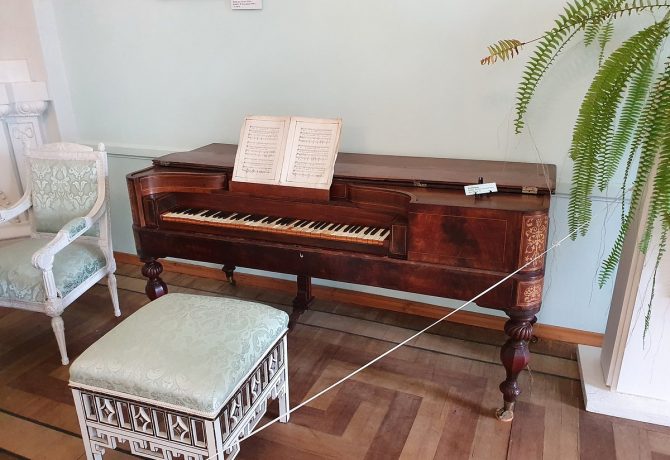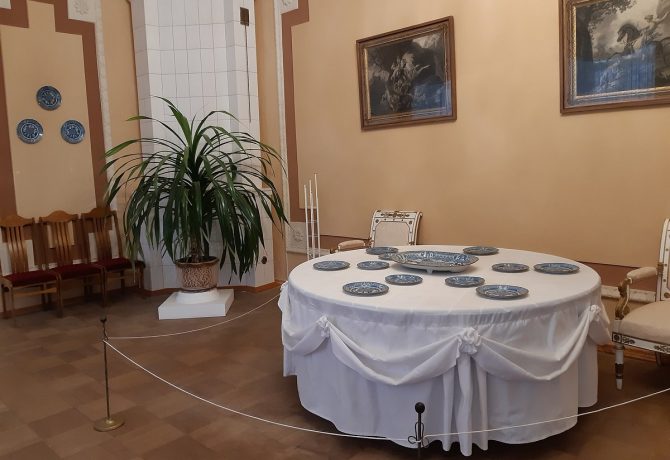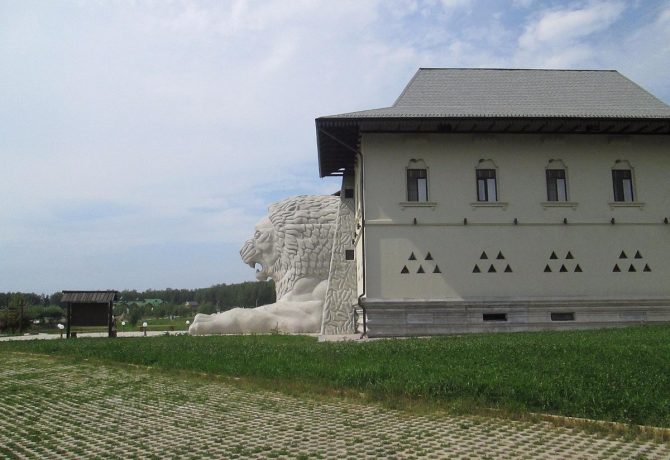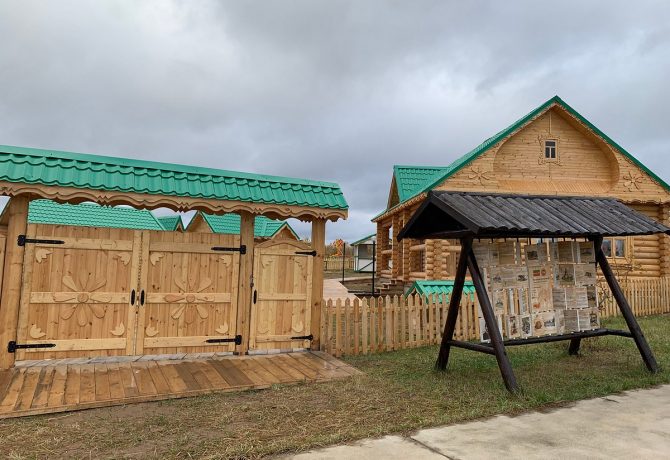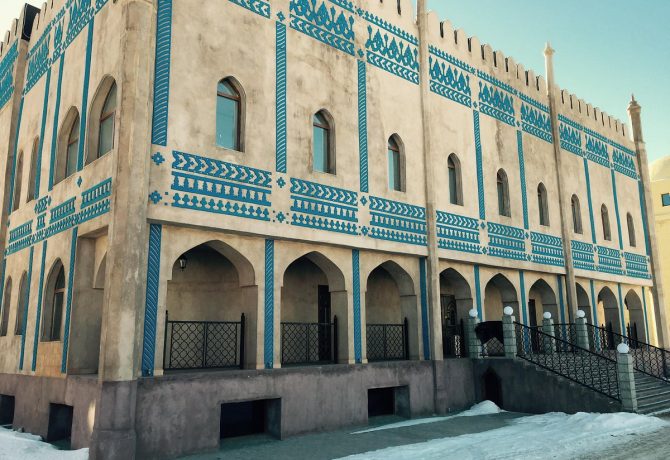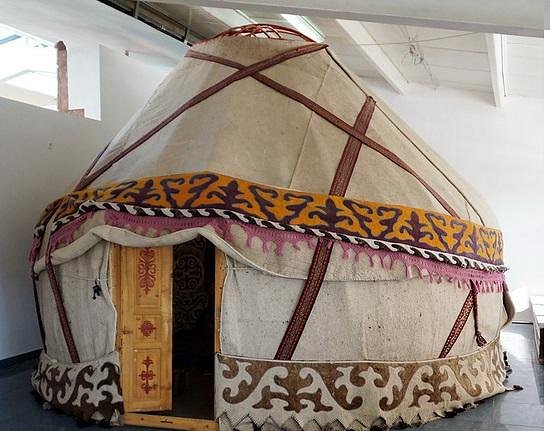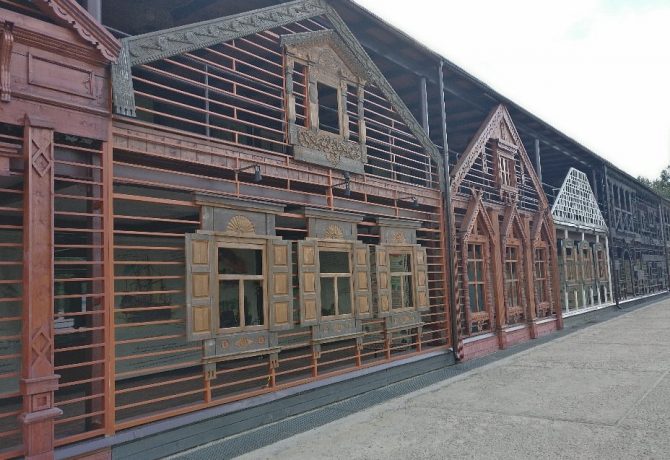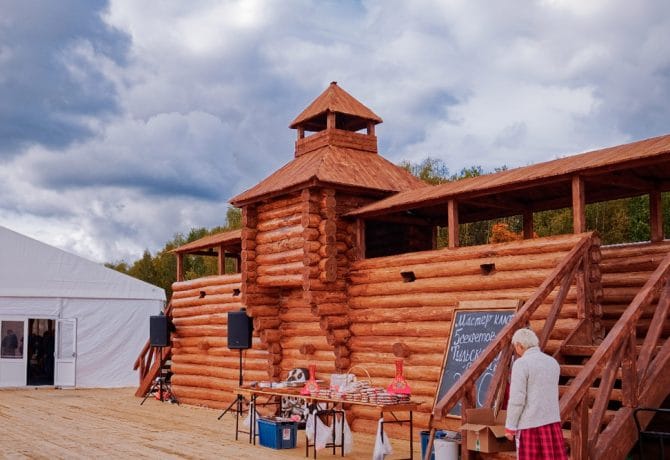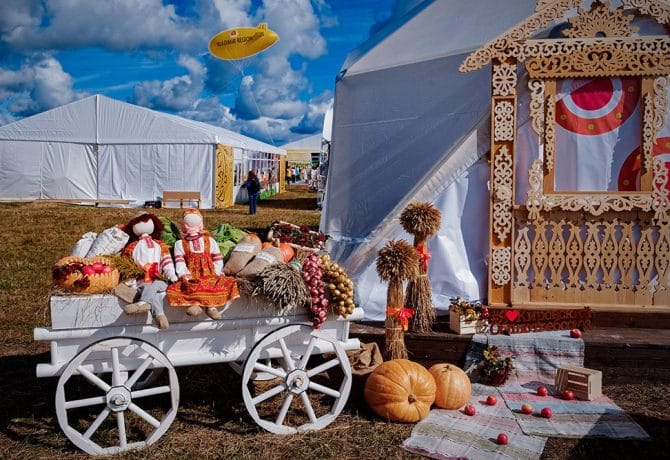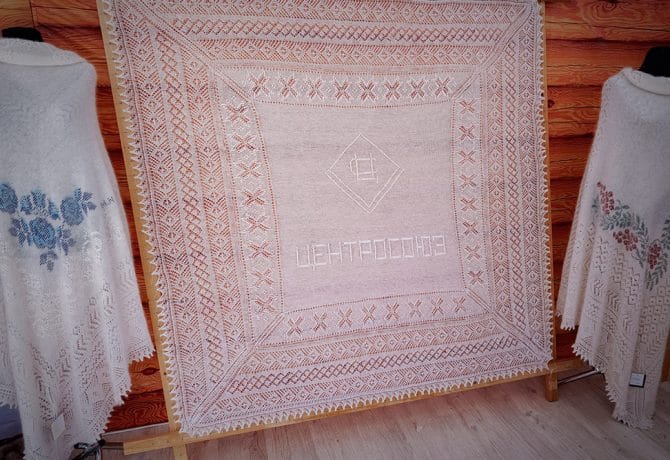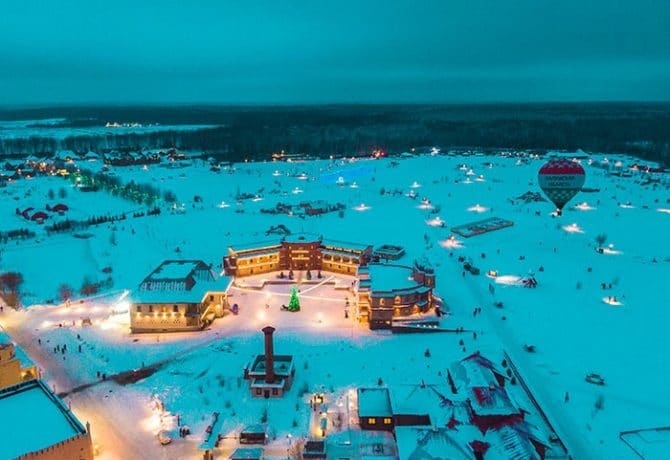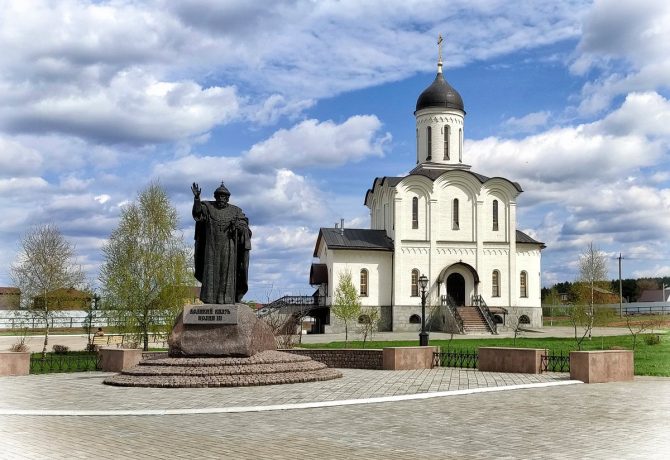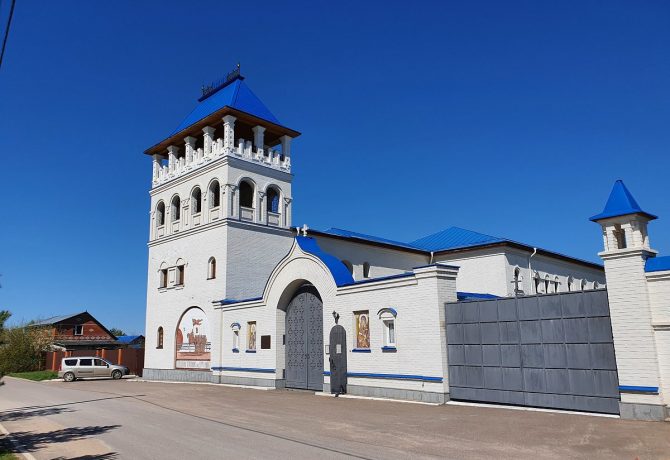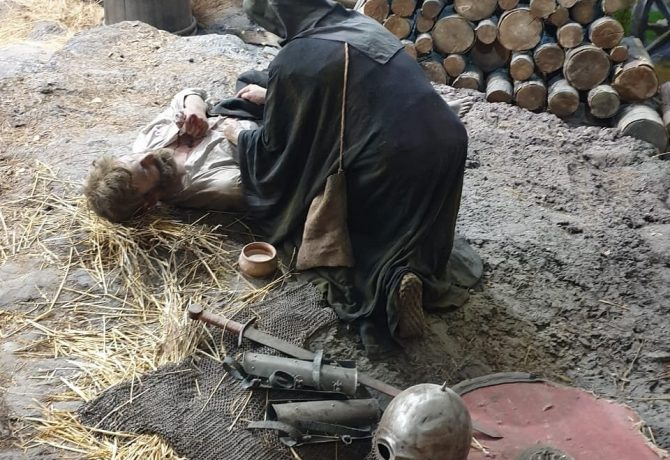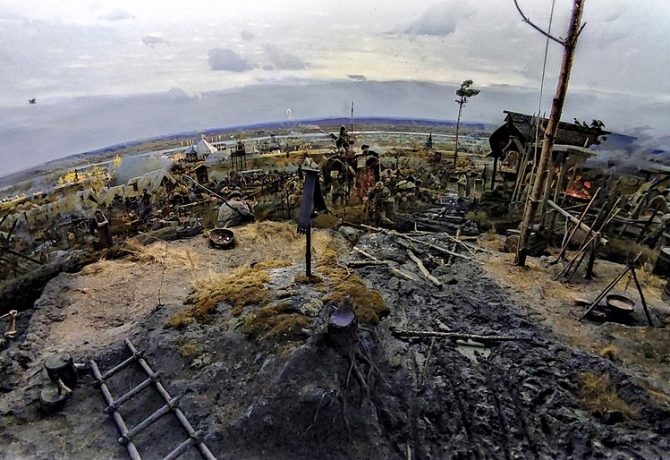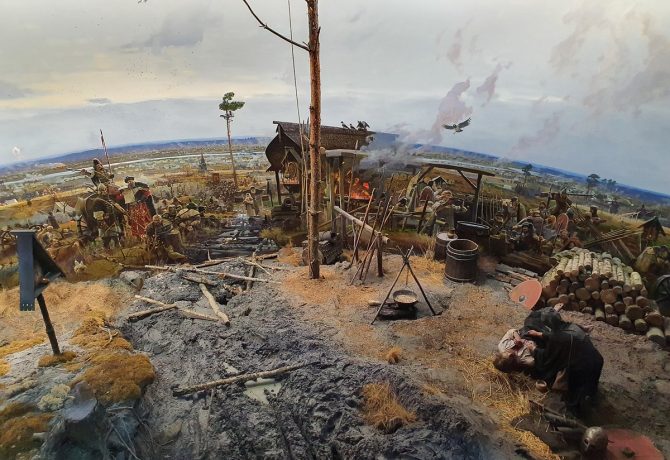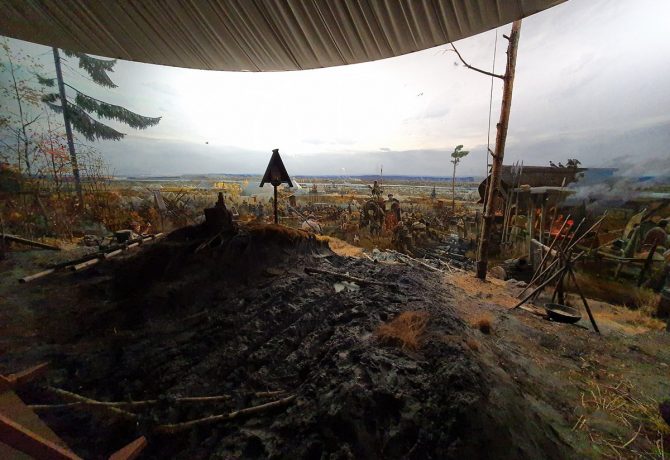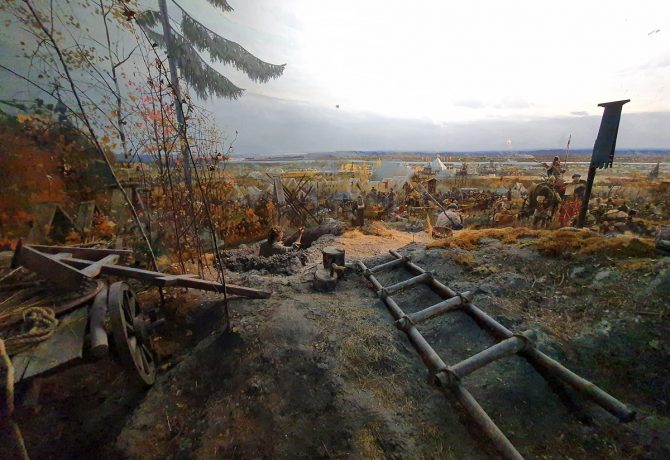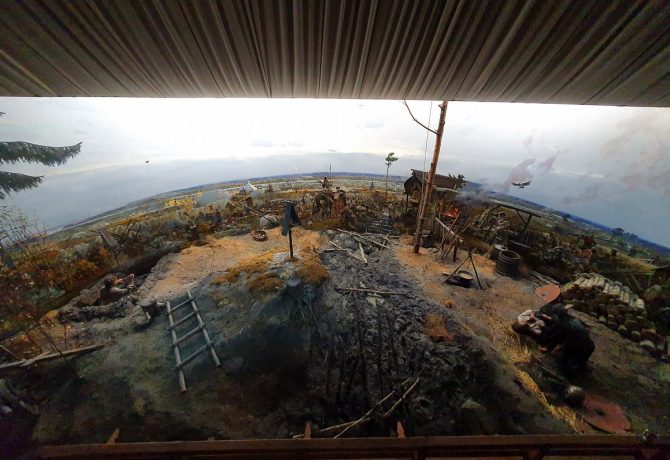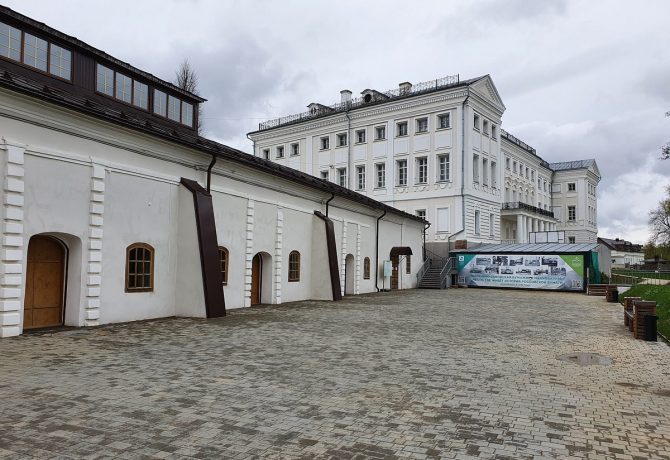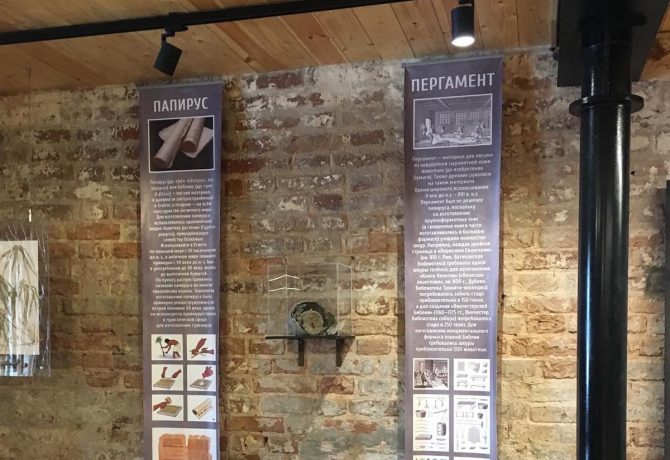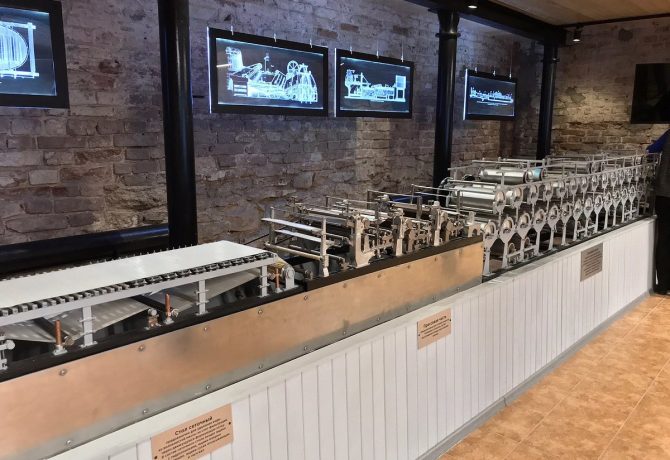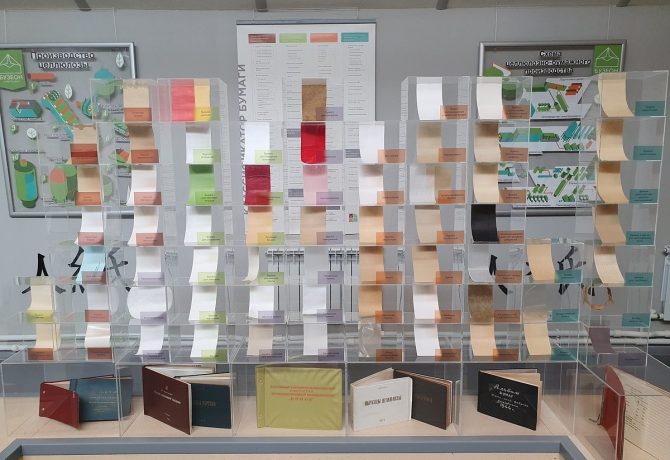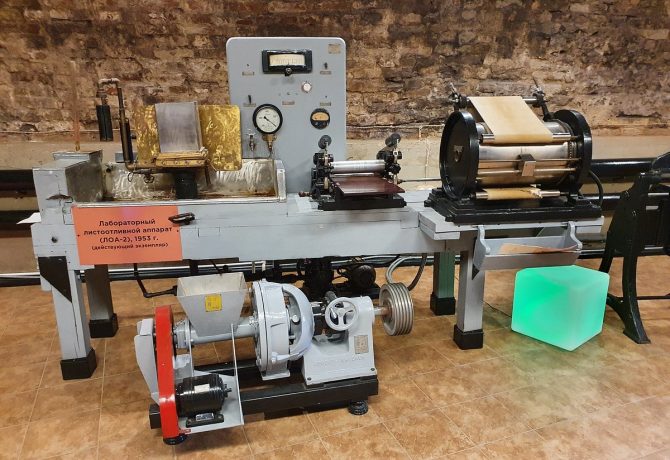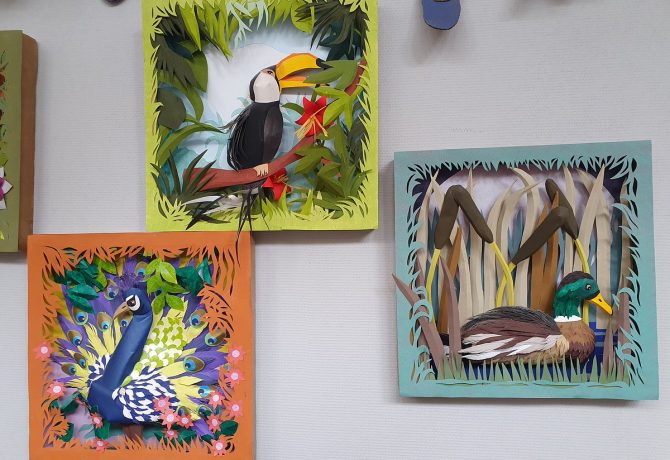On the Central Russian Upland there is a small city, the name of which can be translated into modern Russian as “swamp” or “swamp”. The total area of Kaluga, where a little more than 333 thousand people live, is 168.8 sq. km. The city is located 163 km (in a straight line) to the south-east of the historical center of the Russian capital. To get acquainted with the sights of Kaluga from Moscow on the highway will have to overcome the distance of 210 km.
Disputes about the origin of the city have long been conducted by historians and archaeologists. The first written mention of Kaluga was recorded in 1371 This year is officially considered the date of foundation of the ancient city, located on the picturesque banks of the Ska – a full-flowing river flowing through the territory of the region.
Kaluga is rich in attractions. There are 18 museums, 14 Orthodox churches, a Christian cathedral, stone residential buildings of the XVIII century, 27 parks and squares. Despite such a variety of historical, cultural and sacred objects, the city attracts tourists primarily as a center of domestic cosmonautics. K. Tsiolkovsky was born, lived and worked here. This great scientist is considered the founder of theoretical cosmonautics.
Many tourists come to Kaluga to get acquainted with the old houses, telling about the way of life of citizens in the XVIII century. Other inquisitive travelers are attracted by the sacred structures of the city. Most tourists tend to visit Kaluga to learn about the emergence and development of domestic cosmonautics.
Sights of Kaluga: the route of one day
Among the historical, sacred and cultural monuments and structures of the city, a group of objects that cause the greatest interest of tourists stands out. All of them are included in the route of one day. Tourists can get acquainted with these sights of Kaluga during a walk around the city or with the help of public transport.
- 1 Museum of the History of Cosmonautics
- 2 Vostok launch vehicle in Kaluga
- 3 Stone chambers of Korobov
- 4 Stone Bridge
- 5 Gostiny Dvor
- 6 Teatralnaya Street
- 7 Kirova Street
- 8 Church of Cosma and Damian
- 9 Club-Museum “House of Masters”
- 10 Memorial House-Museum of G. S. Batenkov
- 11 Residence of Santa Claus in Kaluga
- 12 Art Park “Nikola-Lenivets”
- 13 Tikhonova Desert
- 14 Optina Deserts
- 15 “Ugra” – national park
- 16 Kazan Amvrosievskaya desert
- 17 Museum-estate “Linen Plant”
- 18 “Etnomir” – ethnographic park-museum
- 19 “The Great Standing on the Ugra River” – diorama museum
- 20 Buseon – Paper Museum
- 21 Attractions Kaluga on map
Museum of the History of Cosmonautics
Opposite the square them. Gogol towers the building of the Museum of the History of Cosmonautics. This institution, named after K. Tsiolkovsky, is considered one of the main attractions of Kaluga. The exact address of the museum is Akademika Koroleva Street, 2. It can be reached from the bus or train station by taxi or trolleybus number 1.
The Museum of the History of Cosmonautics was opened on October 3, 1967 on the initiative and active participation of Yu. Gagarin and S. Korolev. The first Soviet (Russian) cosmonaut laid the foundation stone for the future museum. Then few people assumed that the institution would become one of the most popular attractions of Kaluga. Now, in [y], more than 75 thousand different exhibits are presented in the museum halls.
The rich collection acquaints visitors with the history of Russian cosmonautics. Here are both the first artificial satellites and modern orbital stations. Documentary materials acquaint guests with the activities of outstanding designers:
- A. Isaeva;
- S. Koroleva;
- G. Babakina;
- S. Kosberg;
- V. Chelomeya;
- V. Golushko and others.
The museum has a planetarium, where informative lectures are held. With the help of full-dome programs developed by the German company Carl Zeiss, and visual effects, visitors are sent on virtual space travel. Here are shown popular science films, fascinatingly telling about the structure of the solar system and the Universe as a whole.
Recently built a new modern building, occupying an area of 12.5 thousand square meters. m Three-story building is a futuristic structure of metal and glass. It is 4 times larger than the historical building of the museum. Both complexes are connected by an underground passage. The new building is equipped with six elevators, including three panoramic, 12 escalators and a spacious observation deck.
The doors of the museum are open to visitors daily, except Mondays, from 10:00 to 18:00. On Saturday and Sunday, the establishment closes at 19:00. You can come to the Museum of the History of Cosmonautics at any time of the year.
The cost of a ticket to both buildings – historical and new – 450 rubles, for school students, pensioners and students – 300 rubles. Visiting only the historical building – 200 rubles. for adult visitors; for students, school students and pensioners – 150 p. Preschoolers in any case pay for an entrance ticket 100 p. In addition to the Museum of the History of Cosmonautics and the planetarium, the museum complex includes several other institutions:
- Museum-apartment of K. Tsiolkovsky;
- Astronomical Observatory;
- Scientific and Memorial Museum of N. Zhukovsky;
- House-Museum of A. Chizhevsky;
- Memorial house-museum of K. Tsiolkovsky.
Address: 2, Akademika Koroleva Str., Kaluga
Vostok launch vehicle in Kaluga
Next to the Museum of the History of Cosmonautics – 124 m in a straight line – is one of the most unique sights of Kaluga. The Vostok launch vehicle is located on the Yachenskaya embankment. The idea to install the monument was implemented in 1972 This year marked the fifth anniversary of the opening of the Museum of the History of Cosmonautics.
The missile was delivered from the capital by rail in disassembled form. She’s never been in space. However, this is an exact copy of the devices that put satellites and spacecraft into Earth orbit, including the one on which Yu. Gagarin made his 10-minute flight around the planet.
In 1972, an assembly shop appeared near the Museum of the History of Cosmonautics. Work was carried out here to collect the rocket. The head of the complex process was Vitaly Timchenko – an experienced engineer of the space flight center. The pedestal was made of durable materials – metal structures and concrete. The operation to install the missile in a vertical position was led by highly qualified specialists from different fields of knowledge:
- V. Nyrkov;
- G. Doroshenko;
- S. Petryaychuk.
The Vostok launch vehicle was successfully installed on June 21, 1972, and the weight of the structure is 144 tons. The height of the rocket is 38 m. Engine power is 20 million horsepower. The first excursion for visitors was conducted by V. Dzhanibekov and A. Leonov – Soviet pilots-cosmonauts – and D. Scott – an American astronaut.
In 2007, Kaluga engineers installed a backlight next to the launch vehicle. In the evenings, the spacecraft acquired a fantastic look. Now, the Vostok launch vehicle is under restoration. However, access to the facility is still open on days when exhibitions are held here.
Guests of Kaluga get to the launch vehicle by buses No. 77, 3 and 2, trolleybuses No. 3, 2 and 1 or fixed-route taxis No. 77, 66 or 1. Stop – “Tsiolkovsky Park”. The cost of visiting exhibitions should be found out on the days of their holding. Most tourists and townspeople come to the launch vehicle to take a few selfies against the backdrop of this unique spacecraft.
Stone chambers of Korobov
Most of the buildings of Kaluga of the XVII century were wooden buildings. Only wealthy townspeople built houses of stone. One of these residents was Kirill Korobov, a successful merchant who made a fortune through the trade in salt, hemp and bread. In the second half of the XVII century, he built two-story mansions on the territory of his estate.
The building was built in an unusual style, combining the features of ancient Russian architecture and baroque. The façade of the double frame is decorated with wooden ornaments. To the spacious canopy adjoins a large front porch, under which the passage to the basements is equipped. On the territory of the estate there is also an oak cellar, a vegetable garden, a salt barn and a garden.
The first floor served for economic purposes. On the second more spacious floor lived members of the Korobov family. The merchant of the 2nd guild had three sons: Peter, Michael and Ivan. In different historical periods, korobov’s Stone Chambers housed public service offices, museum halls and other institutions. In 1997, specialists carried out large-scale restoration work.
Now the Stone Chambers of Korobov, located on Plekhanov Street in the house No. 88, work as a museum in which exhibits of a Russian hut of the XVII century are placed. Guests of Kaluga can get to the doors of the cultural institution by taxi No. 92, 3, 2 or trolleybuses No. 3, 2, 1. The cost of the entrance ticket is 150 p. The doors of the Stone Chambers are open from 9:30 to 18:00 from Tuesday to Sunday. Saturdays are 11 a.m. to 7 p.m. The stone chambers are located almost in the center of the quarter, surrounded by four streets: Komarov, Plekhanov, Pushkin and Bauman.
Address: 88 Plekhanov St., Kaluga
Stone Bridge
Two city streets – Pushkin and Bazhenov – are connected by a structure similar to Roman aqueducts. This is the famous Stone Bridge – one of the iconic sights of Kaluga. It was built on the initiative of Mikhail Krechetnikov – Kaluga governor – and on the project of Peter Nikitin – a famous architect in his time, devoted to the style of Russian classicism. Construction lasted three years – from 1777 to 1780.
The length of the Stone Bridge is 160 m (according to other sources – 112 m). Width – 14 m. The greatest height – 23 m. The bridge is a fastened together 15 large stone arches. Three of them, located in the center, consist of two floors. Below used to flow the river Berezuika. Now it is a ravine overgrown with shrubs and trees.
In 2009, restoration work was carried out on the bridge. After the restoration, on February 16, 2010, the grand opening of the bridge took place, which became pedestrian and accessible to automobile traffic. In the evenings, the structure is brightly illuminated. Kaluga authorities plan in the near future to begin work on the improvement of the ravine and bridge.
You can come here throughout the year. However, the most favorable time when the best views open is from May to September. You can get to the building by trolleybuses No. 3 and 1, fixed-route taxis No. 44, 2 and 1, as well as by bus No. 3. The stone bridge successfully plays the role of an observation deck. From here you can look at the famous buildings of Kaluga for a long time. Very close to the Stone Bridge are the square them. Pushkin and Central Park.
Address: Russia, Kaluga, Pushkin street
Gostiny Dvor
In one of the central quarters of Kaluga at the intersection of three streets – Karpov, Kutuzov, Lenin – and Gostinyadsky Lane are located buildings of Gostiny Dvor. The historical monument was built for quite a long time – from 1784 to 1823 In the design of gostiny Dvor in different periods involved three architects:
- N. Sokolov;
- I. Yasnygin;
- P. Nikitin.
The buildings are built in three architectural styles: early Baroque, Old Russian and Gothic. For a long period in Gostiny Dvor housed trading shops of Kaluga merchants. Now there are shops, as well as several other institutions:
- restaurants: “Gastronome” and “Oriental Bazaar”;
- Small Philharmonic Hall;
- Men’s barbershop Old Boy;
- Museum of Glass;
- visit-center “Ugra” – a national park.
The buildings of the Gostiny Dvor are located on the square with the symbolic name of the Old Trade. Nearby there is a stop of the same year, where trolleybuses No. 3, 1 and 2, buses No. 61, 3 and 2 and fixed-route taxi No. 1 come. The opening hours of establishments located inside the Gostiny Dvor must be clarified before visiting on their websites or by calling the administration.
Address: 118, Lenina Str., Kaluga
Teatralnaya Street
From the Central Park to the Theater Square, on which the building of the Drama Theater is located, one of the main and old attractions of Kaluga stretches – Teatralnaya Street. Its length is 1010 meters. In the XVIII century, when the street was laid, it was called Oblupskaya. The unusual name comes from the word “oblupa”, which in the local dialect meant “suburban tavern”.
For a long time of existence, the street was often renamed. The most famous names are Kutuzov and Lenin. Teatralnaya Street has become since 1961 In 2009, the reconstruction of the quarter was completed. Part of Teatralnaya Street – from the place where it intersects with Dzerzhinsky Street to Theatre Square – has become pedestrian.
There are benches and elegant lampposts, open doors of cafes and shops. Tourists began to often call Teatralnaya Street the local Arbat. It is home to several famous sights of Kaluga:
- Puppet Theater, which began to show its performances in March 1993;
- “Girl with an umbrella” and “Bag of luck” – unusual sculptural compositions;
- “Kilometer Zero”, paved with ancient cobblestones; it is from here that the roads of the Kaluga region begin;
- “K. Tsiolkovsky, holding a bicycle with his hand” is a sculptural composition that allows you to see a famous scientist in an unusual image.
The street is accessible for walks both day and night. You can get here by trolleybuses No. 18 and 3, buses No. 132, 99, 98, 82, 22, 19 and others or by fixed-route taxis No. 80, 76, 74, 73, 66, 63, 43, 32, 31, 29 and 26.
Kirova Street
In the XVIII century, the main street and attraction of Kaluga was Sennaya. On it daily passed carts pulled by fast horses. Now it is Kirov Street, stretching for 1.73 km. The main artery of the city starts from the Peace Square and stretches to Victory Square.
Thousands of pedestrians move along the straight sidewalks of the street every day, hundreds of cars rush along the roadway. Among the most interesting are several objects located on Kirov Street or adjacent to it:
- Theatre Square, which is decorated with the building of the Regional Drama Theater, founded in 1777;
- dozens of cafes, pizzerias and restaurants: “Major”. “Tashir”, “Signor Cappuccin”, “Tomato”, “Pravda”, “U Palych”, “Wings” and others;
- squares: Medical workers and Kirov;
- shopping centers: “Kaluga”, “XXI century”, “RIO” and “European”;
- temples: Myrrh-bearing wives and Predtechensky;
- monuments: S. Kirov and “Gorodovoy with a dog”;
- House of Artists;
- city market.
Guests of Kaluga will not be difficult to get to Kirov Street. There are several buses No. 146, 91, 77, 74, 72, 42, 36 and others, trolleybuses No. 18 and 3, as well as many fixed-route taxis – No. 73, 69, 63, 32, 29, 22.
Church of Cosma and Damian
The central quarters of Kaluga are decorated with many status and sacred buildings. One of them is the temple of Cosma and Damian, located at the intersection of two streets: F. Engels and A. Suvorov. Initially, the church, built in 1794, was located on Bogoyavlenskaya Street, where the workshops of blacksmiths were located. Saints Damian and Cosma – the Bessrebreniks and miracle workers – were considered the patrons of blacksmiths. Later, the temple was moved closer to the Moscow Gate.
In 1836, a four-tiered belfry building grew next to the church. In 1888, the walls and vault of the temple were re-painted after a fire. When the Bolsheviks closed the church in 1937, the building was used as a prison, warehouse and garage. Since 1992, work began on the restoration of the temple of Cosma and Damian. Restoration is still ongoing. However, the doors of the church are open daily for everyone who wants to attend services.
The five-domed temple is located on Suvorov Street in the house No. 177/16. Not far from the church there is a stop. Trolleybuses No. 18 and 3 come here, as well as many buses (42, 36, 27, 26, 4, 3, etc.) and fixed-route taxis (501, 43, 32, 26, 22, 19, etc.). In front of the facade of the temple there is a small square, in which there is a monument to the soldiers who fell in the “hot spots”.
Address: Friedrich Engels Str., 14A, Kaluga
Museums that can be explored additionally
Acquaintance with the interesting sights of Kaluga can be continued, expanding the list of objects worthy of attention. Among them, there are three places where it is worth looking in the first place.
Club-Museum “House of Masters”
In one of the central quarters of Kaluga stretches a unique Voskresenskaya street. It houses several historically valuable buildings built in the century before last. Perpendicular to this street stretches Grigorov Lane, where in the house number 9 there is a unique building – the House of Masters, which includes six expositions:
- “Contemporary Art”;
- “Fabrics”;
- “Weaving from lyka and vine”;
- “Tree”;
- “Ceramics”;
- “Upper Mountain”.
The exhibits tell numerous visitors about the life and folk craft of Kaluga artisans and peasants of the century before last. A house with an attic – as this building used to be called – appeared in Kaluga in the 60s of the XIX century. This is evidenced by the surviving documents. For many years of existence, the owners of the house were a variety of people:
- M. Boryaeva – a representative of the noble class;
- V. Volkonsky – the famous prince in Kaluga;
- 11 heirs of the prince from the city of Orel;
- V. Olkhovskaya – titled adviser;
- Slesarev brothers – Yelny merchants.
After the restoration carried out in 1971-1973, the building began to accommodate the house management No. 5 of the GZHU. Thanks to the restoration work, modern amenities have appeared in the house:
- bathroom;
- radio;
- telephone;
- electrical wiring;
- water supply;
- sewerage;
- central heating.
In 1996, the city council made a fateful decision, as a result of which the House of Masters received the status of a monument to urban planning of the century before last. The institution of culture functions as a club-museum, which houses halls with expositions, master classes, exhibitions of folk art and products of modern artisans of the Kaluga region.
Next to the House of Masters there is a stop “Red Cross”. You can get here by taxi No. 97 and 95, trolleybuses No. 12 and 5, buses No. 97, 85 and 12. The entrance ticket for adult visitors costs 100 p. For children and students – 50 p. The House of Masters receives guests from Tuesday to Saturday inclusive from 9:30 to 18:00.
Address: 9, Grigorov lane, Kaluga
Memorial House-Museum of G. S. Batenkov
Not all tourists know that in Kaluga there were participants of the Decembrist movement. One of them – Gavriil Batenkov – lived and worked in the city since 1857 In 2009 opened its doors to a memorial museum associated with the name of the Kaluga Decembrist. G. Batenkov worked as an engineer at the railway station, was part of the local scientific community, led an active social life.
In the museum dedicated to this Decembrist, a variety of materials are collected. The doors are open to history buffs from Tuesday to Sunday from 9:30 a.m. to 5:30 p.m. In four rooms of the Memorial House-Museum, located on Suvorov Street in the house No. 42, documents on the Decembrist movement and the war with Napoleon of 1812 are collected.
The entrance ticket will cost each adult visitor 70 rubles, for students and pensioners – 50 p. Access for guests of the house-museum, who are not yet 18 years old, is free. Tourists and citizens get to the stop “Peace Square” by buses (93, 75, 33, 42, 22, 20, etc.), trolleybuses No. 18 and 13 and fixed-route taxis (73, 63, 44, 29, 24, etc.).
Address: 42, Suvorov Str., Kaluga
Residence of Santa Claus in Kaluga
In the 2010s, from mid-December to the end of the first week of January, Kaluga became the place where the residence of Santa Claus was located. It was located in the famous landmark of the city – the House of Masters. Since December [y], the address of the residence has changed. Since then, the “possessions” of Santa Claus are located on the territory of Central Park near the Professional Passage.
Children and teenagers come here in December and January days to read poems, receive gifts from the Snow Maiden and Santa Claus, become spectators of bright New Year’s performances. A small hall of the residence is decorated with a Christmas tree with garlands and a throne on which Santa Claus sits.
The porch of the House of Masters is hung with spruce branches, which gives the whole building a solemn look. Visiting all events for guests is free, although until [y] the entrance ticket cost 150 p. About how access to the residence of Santa Claus will be organized in the future, guests can find out from the messages on the page in the social group “Vkontakte”.
The nearest stop to the residence is “Old Torg”. About how to get here, you can find out in the section dedicated to Gostiny Dvor.
Address: Russia, Kaluga region, Kaluga city district, Grabtsevo industrial park
Attractions in the vicinity of Kaluga
Not only Kaluga, but also its suburbs are rich in interesting objects for tourists. It is much more difficult for guests to get to them when compared with the accessibility of attractions within the city. However, the vivid impressions that inquisitive tourists will receive compensate for this drawback.
Art Park “Nikola-Lenivets”
49.8 km (in a straight line) to the north-west of Kaluga is a village with an unusual name – Nikola-Lenivets. Here is the art park of the same name, well known to creative people of modern Russia. The project began with the first installation “Snowmen”, made in 2000 by Nikolai Polissky – Kaluga artist.
Several other works were later created. Since 2005, on the initiative of N. Polissky, the festival “Archstoyanie” began to be held. Thanks to this mass event, dozens of other unusual art objects were created:
- “Rotunda”;
- Beaubourg;
- “Mayak”;
- “Storming the sky”;
- “Gilded Taurus”;
- “Barn Wall” and many others.
A great contribution to the development of the project was made by Maxim Nohotkov, a sponsor and entrepreneur. Thanks to the businessman, in 2015, summer houses, cafes and a tent camping appeared on the territory of the art park. Since 2016, a team of artists has been leading the project:
- A. Kochurkin;
- N. Polissky;
- Yu. Bychkova;
- I. Polissky.
Now, in [y], the nikola-Lenivets art park occupies a gigantic territory of 650 hectares. It is located inside a national park named after the Ugra river flowing here. Access to the art park is open daily from 9 am to 9 pm. The cost of the entrance ticket is 400 rubles.
Tourists most often get here by rented or own car. From the center of Moscow on the Kiev highway – 230 km, on Minsk – 220 km. If you go from Kaluga, you have to overcome the distance of 73 km. Travelers who prefer public transport take a bus from Kaluga to Kondrovo, a small village. Then tourists continue by taxi to the art park “Nikola-Lenivets”.
Address Russia, Kaluga region, Zvizzi, 1
Tikhonova Desert
20 km north-east of Kaluga, if you go by road, is the village of them. Leo Tolstoy. Here, among the trees on the Veprika River, there are “possessions” of the existing monastery – the Tikhonov Desert. The monastery was founded by Tikhon Medynsky – Kaluga abbot – in the second half of the XV century. Surviving written sources have not recorded an exact date.
The history of the monastery is full of dramatic events. One of them is the destruction of buildings by the Polish invaders in the middle of the XVII century. Since 1677, restoration work has been carried out. In the XVIII century, the buildings of the monastery began to belong to the Kaluga diocese. During the years of Soviet power, the monastery fell into desolation. In the 1990s, restoration work was carried out. Now on the territory of the Tikhonov desert there are several sacred and status structures:
- five temples;
- two museums;
- chapel;
- two sketes.
The largest buildings are considered to be cathedrals: Transfiguration and Assumption. Both temples were built in the Russian-Byzantine style. Transfiguration Cathedral is the oldest stone building of the monastery. The temple was erected in 1677 Everyone can visit inside the monastery walls on any day. Morning services begin at 5:45 a.m. and evening services at 4:45 p.m.
The monastery complex is located on Sovetskaya Street in the house number 19. Tourists get to the village of Leo Tolstoy by road. The distance from Kaluga is 25 km, from Moscow – 170 km. Motorists go from the capital on the Kiev highway, and then on the road 29K-008. Between Kaluga and the village every 3-4 hours there are regular buses.
Address: Russia, Kaluga region, Dzerzhinsky district, village named after Leo Tolstoy
Optina Deserts
About 60 km southeast of Kaluga is Kozelsk, a small Russian town. Not far from it is the territory of the Optina desert – a monastery founded in the XV century. The name of the monastery is associated with the name Opta. This was the name of the robber, who, after repentance for his sins, became a monk and founded a monastery – Optina Deserts.
The monastery is located near Kozelsk far from major cities. In Russia, deserts were called remote monasteries. Now Optina Desert is a large monastic complex consisting of several sacred structures:
- churches: Transfiguration, Vladimir, Kazan, Predtechensky and Mobile;
- chapels;
- Vvedensky Cathedral, built in 1771;
- churches in honor of Leo of Katana, All Saints, Mary of Egypt, icons of the Mother of God and Hilarion the Great.
Services are held daily. Visitors to the monastery can become participants in excursions. Events are held every day from 8:30 to 17:00. The cost for an adult participant is 150 rubles For children – 50 rubles. The doors of the temples are open to visitors from 5:30 to 17:00. On Sundays, visits to sacred buildings are allowed an hour later – from 6:30.
Between Kozelsk and Kaluga there are regular buses. Travel time – from 1.5 to 2 hours. Motorists get by car from Kaluga to Kozelsk, then along the Optina highway to the monastery complex. In Moscow, from the metro station “Teply Stan” there are regular buses to Kozelsk. Next, you should use the service of rush. Only it provides taxi services in Kozelsk.
Address: Russia, Kaluga region, Kozelsk, optina Pustyn village
“Ugra” – national park
On the territory of several districts of the Kaluga region, the “possessions” of the national park are located. The protected area is named “Ugra” in honor of the river flowing here. The total area of the national park, founded on February 10, 1997, is 986.24 sq. km, which is approximately equal to the territory of Moscow inside the Moscow Ring Road. Its main visitor center is located in Kaluga on Lenin Street in the house number 124. The national park includes six district forestries:
- Berezichskoye;
- Optinskoe;
- Vorotynske;
- Galkinskoye;
- Belyaevskoe;
- Ugrian.
Future guests of the park should decide which site they want to visit in order to outline the correct route to the chosen point. Usually tourists get by car on the road to Kaluga, and then go to the protected area. In the national park you can spend time pleasantly and usefully:
- wander along the paved hiking trails;
- pick berries or mushrooms if it’s time to harvest;
- swim or fish in local rivers and clear lakes;
- ride bicycles rented at tourist bases, along forest paths;
- become participants of fascinating excursion programs;
- relax in the tent camping.
Deciduous forests and meadows are rich in a variety of vegetation. No less diverse is the world of birds and animals. In the national park there are many varieties of fauna:
- mammals – 58 species;
- birds – 216;
- reptiles – 5;
- amphibians – 11;
- fish – 34.
The most common trees in the national park are pines, birches, spruces, aspens and oaks. Visitors see a variety of inhabitants of the protected area:
- capercaillies;
- elk;
- chizhey;
- martens;
- grouse;
- wild boars;
- woodsyats;
- roe deer;
- thrushes;
- hedgehogs and others.
Entrance to the territory of the national park is paid – 100 rubles per tourist. Bicycle rental will cost 150 rubles. for 1 hour. Daily rent of a tent – 350 p. The cost of services offered in the protected area can be found in detail on the official website of the national park.
Address: Russia, Kaluga region, 29K-001
Kazan Amvrosievskaya desert
19 km north of Kozelsk is Staroye Shamrodino, a small Kaluga village. Here, in 1884, the Kazan Amvrosievskaya desert was founded. This women’s monastery is sometimes called Shamrodinsky monastery. Its founders were Ambrose of Optina and his daughter Sophia, who became a nun and abbess of the Kazan Ambrose desert.
In 1923 the monastery complex ceased to exist. Restoration work began only in 1990 Now amvrosievskaya desert includes several sacred buildings:
- 15-chapter Kazan Cathedral, consecrated in 1902;
- three temples;
- the resting place of the abbesses of the monastery.
The monastery complex is open to the public daily from 8 am to 8 pm. You can come here at any time of the year and find peace and tranquility. Morning services begin from 6:00, evening – from 17:00.
Motorists go from Moscow along the Kiev highway to Kaluga, then on the roads – P29 and 29K-015 – to the village of Kamenka, where you need to turn in the direction of Old Shamrodino. In this village there are buildings of the Kazan Amvrosievskaya desert.
Address: Russia, Kaluga region, Kozelsky district, village Staroye Shamordino
Museum-estate “Linen Plant”
Moscow land is famous for noble estates and estates. In the Kaluga region, there are not so many of them. One of the most famous museums-estates is the “Linen Plant”, located in the village of the same name. From Kaluga it is separated by 38 km, if you go by road.
The plant for the production of canvas, which the Russian fleet needed, appeared in the village at the beginning of the XVIII century. The company flourished until the end of the XIX century, when the need for this product decreased sharply. The owners of the plant are G. Shchepochkin and A. Goncharov – began to build luxurious estates for this area.
After the events of 1917, the estates fell into desolation. Restoration work began in 1972 Since 2015, the estates and the Linen Plant have acquired the status of a museum-reserve. The institution of culture began to receive visitors since 1999 The Museum-Reserve includes not only a three-storey house-estate of Goncharov with a library, a museum and a children’s art school, but also other objects:
- Transfiguration Church;
- Shchepochkin’s house, where the Museum of Local Lore is located;
- alleys: Oak and Pushkin;
- park with ponds;
- horse yard;
- greenhouse.
The museum-estate is located in the village of Polotnyany Zavod on Trudovaya Street in the house No. 1a. The cultural institution receives visitors from Tuesday to Sunday from 9:30 to 18:00. The cost of the entrance ticket is 150 rubles For pensioners and students – 100 rubles Young guests who are under 16 years old visit the museum-estate for free.
Tourists go to the museum-estate from Kaluga by bus, which departs from the bus station in the direction of Kondrovo, or on a passing train from the railway station in the same direction. The main thing is not to pass the station “Linen Plant”. From Moscow from the metro station “Teply Stan” there are also buses to Kondrovo. Motorists go to the Polotnyany Zavod on the Kiev highway, and then, passing by the Tikhonov desert, on the road 29K-008.
Address: Russia, Kaluga region, p. g. t. Polotnyany Zavod, Trudovaya str., 2A,
“Etnomir” – ethnographic park-museum
Tourists who like to plunge into the history, traditions and life of different peoples should go to “Ethnomir” – a well-established ethnographic park-museum. The author of the project is Ruslan Bayramov. The opening of the ethnographic park-museum took place in 2007 Now “Ethnomir” occupies a huge territory of 140 hectares.
It is not easy to describe in a few words this large complex, telling about the traditions, life, history and culture of different peoples. On the territory of “Etnomir” there are many interesting objects:
- samples of Russian wooden huts of the century before last;
- attractions: “Dinosaur Park”, “Laser Labyrinth”, “Aladdin’s Journey”, “Questo Park” and others;
- baths, exhibitions, craft workshops, museums, restaurants, interactive zoos, cafes.
In “Etnomir” will not be bored neither adult guests nor children. The cost of the entrance ticket is 450 rubles For young guests under 5 years old, visiting the ethnographic park-museum is free. For students – 250 p. “Etnomir” receives guests daily from 9 am to 9 pm. The best period for a visit is summer, early autumn and late spring.
Most tourists get to the ethnographic park-museum from the Kievsky railway station of the capital. From there to the station “Balabanovo” is a train. Next, you should cover a distance of 30 km by pre-booked taxi. Motorists get to “Etnomir”, located in the village of Petrovo, Borovsky district, Kaluga region, on one of two highways: Minsk (120 km) or Kiev (95 km).
Russia, Kaluga Oblast, Borovsky District, Petrovo Village
“The Great Standing on the Ugra River” – diorama museum
Approximately 175 km from the capital and about 20 km from Kaluga is the place where on October 8-11, 1480 there was a battle between Russian and Mongol-Tatar troops. The confrontation ended with the victory of Russia, which led to the end of the Mongol-Tatar yoke. The Russian army was led by Ivan III. Mongol-Tatar – Khan Akhmat. This event was captured on his canvas by Pavel Ryzhenko – Honored Artist of Russia.
The painting is exhibited in the diorama museum in 3D format. Visitors can see in detail the 155 characters depicted on the canvas and feel the atmosphere of the battle. The height of the canvas is 6.7 m, the length is 23.6 m. “The Great Standing on the Ugra” is a unique diorama museum, opened in September 2014. Events are held daily from 9:00 to 16:00 at the beginning of each hour.
The museum-diorama is located on the territory of the Tikhonov desert. Therefore, the address and path coincide with what is indicated for the monastery complex. The cost of the tour for an adult participant is 300 rubles, for children – 100 rubles, for pensioners and students – 200 rubles.
Address: Russia, Kaluga region, Dvortsovy village, Tserkovnaya str., 1
Buseon – Paper Museum
In the previously mentioned Linen Plant – a village near Kaluga – there is another object worthy of the attention of tourists. The one-story building of the paper manufactory was transferred to Buseon. So unusually called the Museum of Paper, located on Trudovaya Street in the house number 2.
The history of the institution begins in the first half of the XVIII century. Then in Russia the development of paper production was of great importance. In 1725 in Sgomon – so at that time was called linen Plant – was opened a manufactory founded by Timofey Karamyshev – a talented merchant. In the middle of the XVIII century, the factory produced 1/3 of all paper in Russia.
The Buseon Museum opened its doors recently, in August 2018 In the halls of the institution, visitors will see how paper production developed in Russia and abroad. One of the most valuable exhibits is a mill installed at the manufactory in the XVIII century. If desired, visitors to the museum can become participants in master classes and learn how to make paper as it was done in the century before last.
Buseon receives visitors from Wednesday to Sunday from 10:00 to 18:00. The entrance ticket will cost an adult guest 220 p. Students and pensioners pay 110 p. Young guests who are under 7 years old visit the halls of the Museum of Paper for free. Buzeon is located in the village of Polotnyany Zavod. Earlier it was already told how to get to this place.
Address: Russia, Kaluga region, p. g. t. Polotnyany Zavod, Trudovaya str., 2A
Kaluga is rich in attractions worthy of the attention of inquisitive travelers. It is not easy for tourists to choose objects that are worth seeing during a visit to the city. Here are the most interesting sights of Kaluga and its surroundings. Having got acquainted with them, tourists will certainly get an idea of how the Kaluga land differs from other regions of vast Russia.

